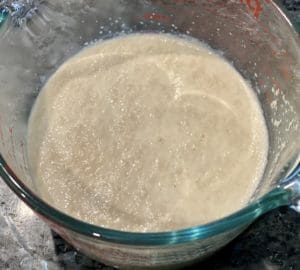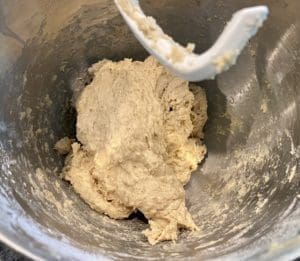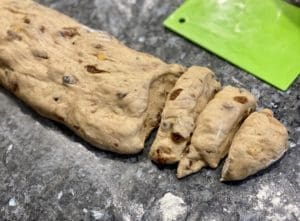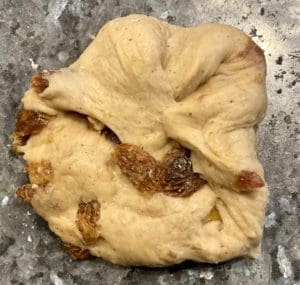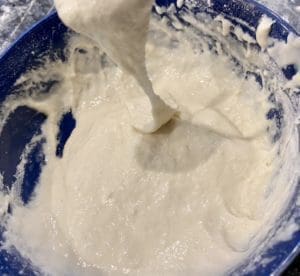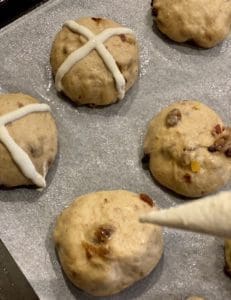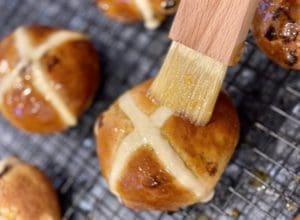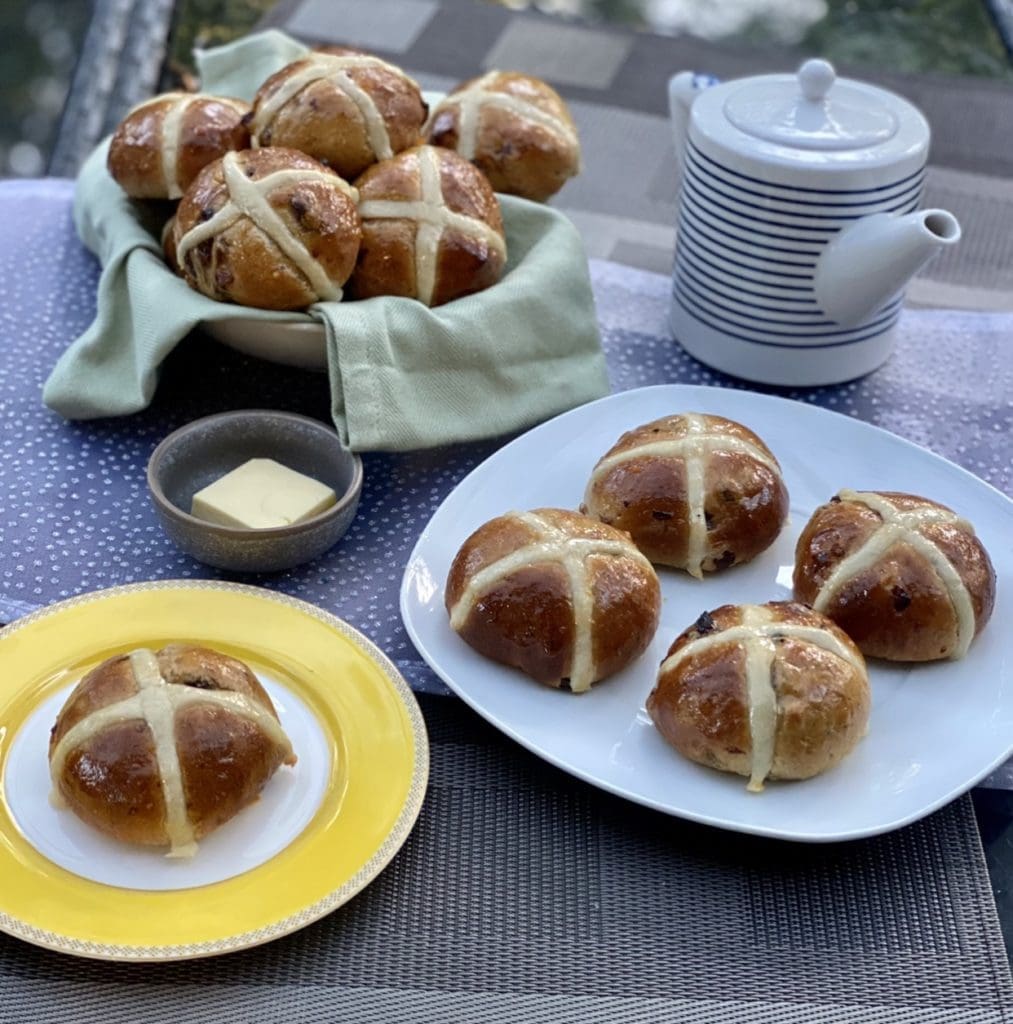
Step-by-step guide to how to make these delicious old fashion Hot Cross Buns! They’re filled with plenty of mixed dried fruit and spices
Store-bought vs homemade Hot Cross Buns
There are probably a million hot cross buns recipes online. Hence, I was indecisive if I was going to post one myself, but according to my sister and husband, I should. I was letting them know how challenging it is for me to come up with original Easter themed recipes. Being as helpful as ever, they both instantly suggested ‘hot cross buns’. Yes, I already know. I’m very lucky to live with two geniuses.
To be honest, hot cross buns are one of those things that I just fork out the money to buy. They’re reasonably priced and they taste okay, and above all, they’re convenient! Our supermarket shelves stock bags of Easter buns in February. Each time I walk by, I can’t resist grabbing a bag.
I don’t make homemade hot cross buns as much as I would like to because, to be frank, there are a few steps involved, and it takes hours. But that’s a shame because homemade buns are so much better!

Making this recent batch of hot cross buns made me remember what I’ve been missing out on for so long. The store-bought buns nowadays are quite tasteless with little fruits and little spices added. That’s the beauty of making our own buns, we’re able to fill each bun with as much good stuff as we want.
These rustic and pretty looking buns are soft and chewy. They’re filled with classic dried fruits that comprise sultanas, raisins, mixed peel and glace cherries. This recipe makes 16 smaller but decent size individual hot cross buns. They’re perfect to take to work to share with colleagues or bake to share at an Easter gathering. You’re definitely going to impress people when you tell them you’ve made these at home!
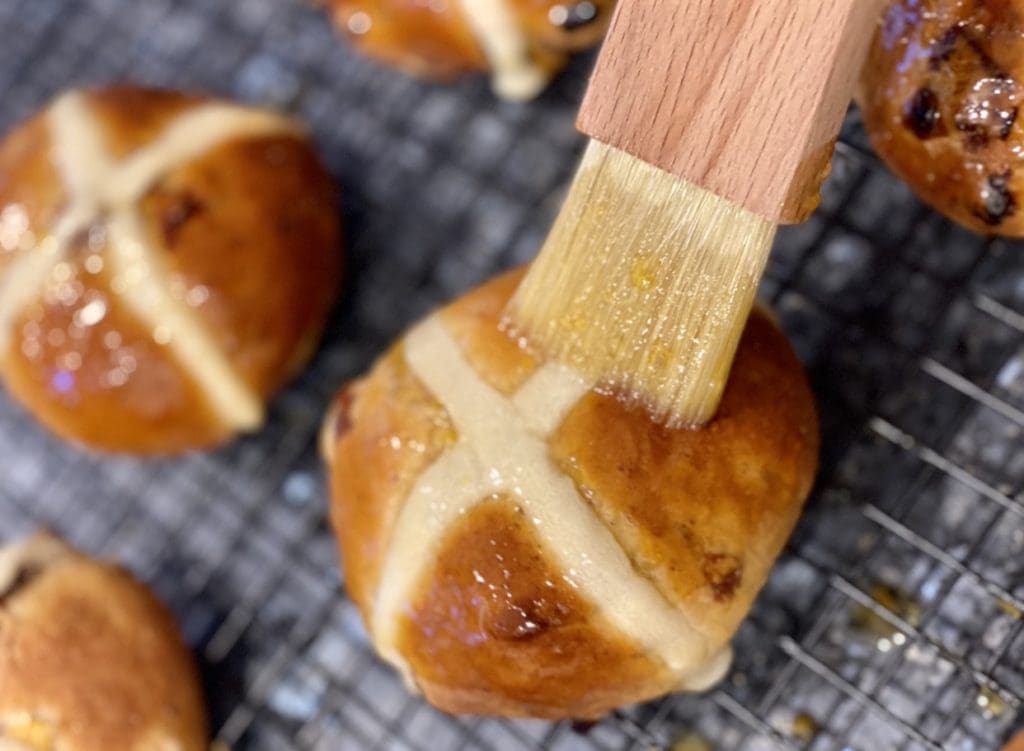
Create Hot Cross Buns that you love to eat
Yes, there are a few steps involved in this recipe. However, I promise, with the step-by-step guide I’ve provided, you’ll be able to make these at home easily.
I found a few shortcuts to make it as least laborious as possible, and that means we say hello to the wonderful stand mixer to knead our dough. Unfortunately, we can’t avoid the dough’s resting and rising time. But that’s okay because once your buns are out of the oven and glazed, you’ll be ecstatic and proud to have made a beautiful batch of delicious Easter Hot Cross Buns.
There are a few varieties of Hot Cross Bun in stores nowadays. You can get fruitless, no spice, chocolate and more. We’re one of those people that loves trying new things, so we tried them all. The verdict is in, and we’ve agreed unanimously that the classic mixed dried fruit buns are the best.
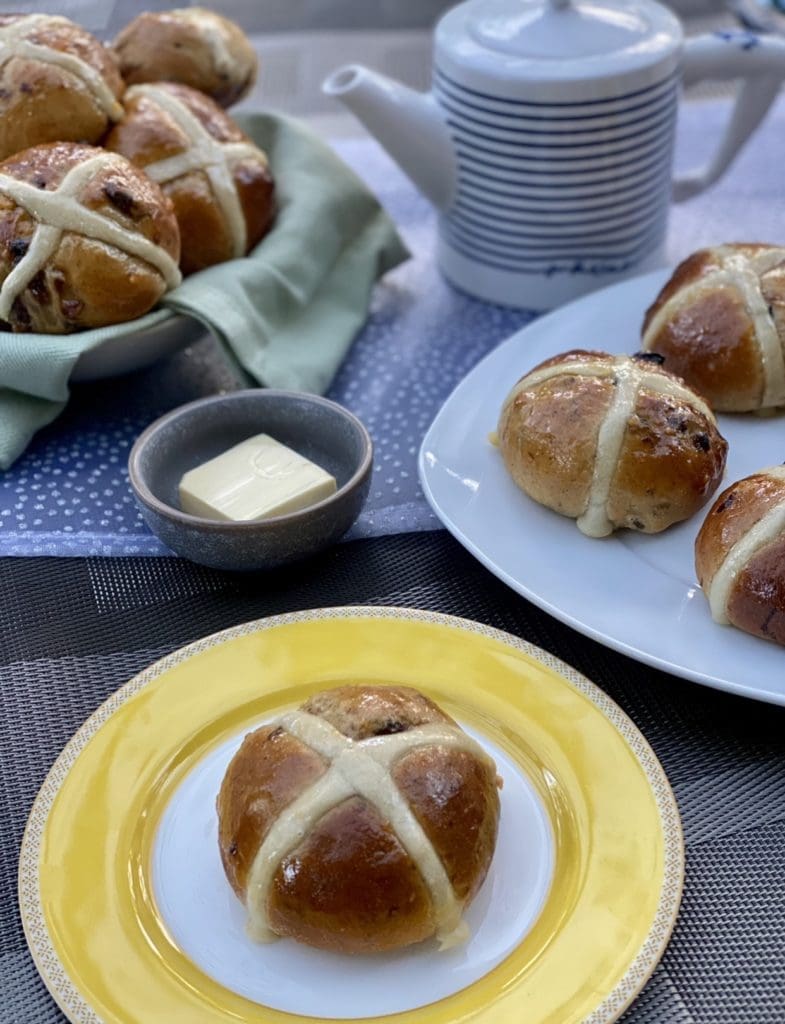
Dried fruits can set off arguments. I’ve listened to some people whine about how much they’re offended by sultanas or raisins, but I could never have understood them. How is it possible to hate on something that’s super sweet? But I shouldn’t judge because there was a time when I hated eating dried lemon and lime peel. They’re still not my favourite things to eat, but hot cross buns seem a little boring without them.
If you’re not a fan of mixed fruits, you could swap them with equal amounts of chocolate chips. Or you could keep it simple and use just sultanas or raisins. You could also just leave plain buns and I’ll try my hardest not to judge you.
For those that celebrate Easter, I hope you have a fantastic one and for those who don’t, enjoy the holidays.
Looking for some bread recipes? Try these out:
No-Knead Focaccia with Bacon, Egg and Sausage
Easy Overnight Breakfast Strata
Ingredients for Easy Hot Cross Buns
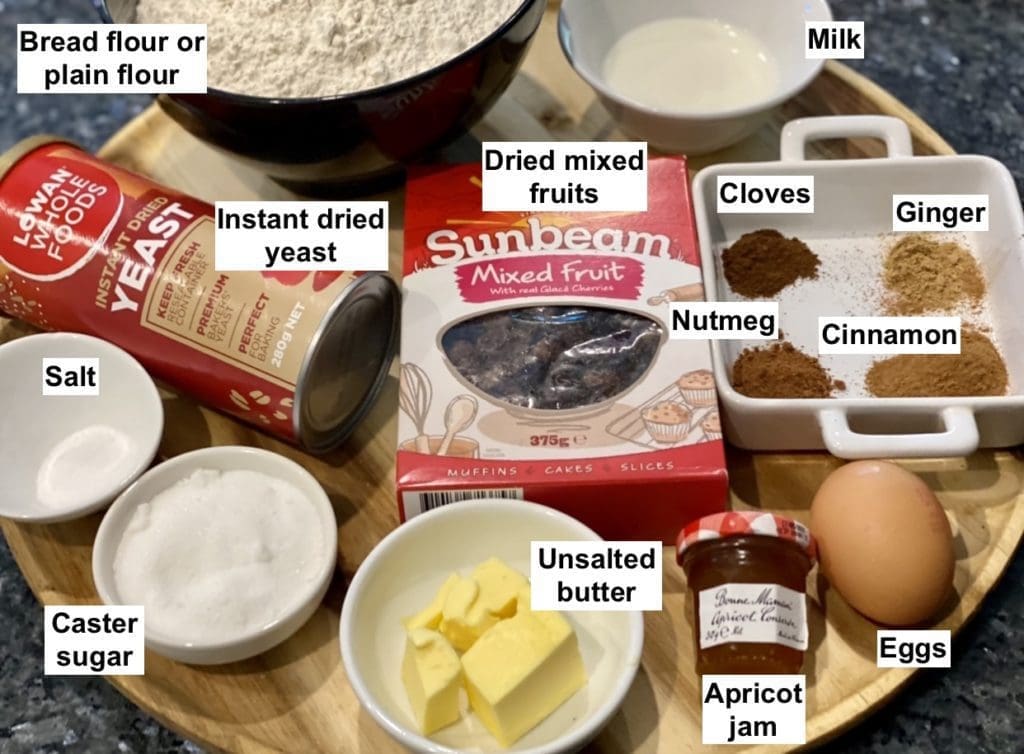
Bread flour has a higher amount of protein than plain flour (all-purpose flour). Protein produces lots of gluten and makes the dough rise when baking. Plain flour would also work, but it may end up being a slightly wetter dough and different in texture.
Dried mixed fruits – I used a premixed bag of dried fruit which comprises sultanas, currants, raisins, grace cherries, orange and lemon peel. Some people are fussy about their dried fruits, so create your own mix. For example, swap mixed fruits for equal amounts of sultanas and raisins.

For the latest recipes, join our FREE 3CatsFoodie mailing list
Yeast – I used instant yeast (rapid yeast), this variety you usually need to chill or freeze after opening. Instant yeast doesn’t need to be hydrated and rises faster than active yeast. Instant and active are interchangeable for equal amounts, but active yeast needs more time to rise. Out of habit, I always hydrate my yeast, regardless of what variety I’m using, because I like seeing it alive.
Caster sugar (superfine sugar) – Caster sugar (superfine sugar) – Caster sugar has finer granules than regular white sugar. However, it’s not the same as icing/powdered sugar. Many baking or candy recipes call for caster sugar as it dissolves faster and better into mixtures. If you can’t find caster sugar, you can make your own by placing regular sugar in a food processor or blender. Pulse the sugar a few times until it looks finer, but don’t over-blitz to a powder consistency. Or, just use equal amounts of regular white sugar.
How to make Easy Hot Cross Buns
Step-by-step guide with photos
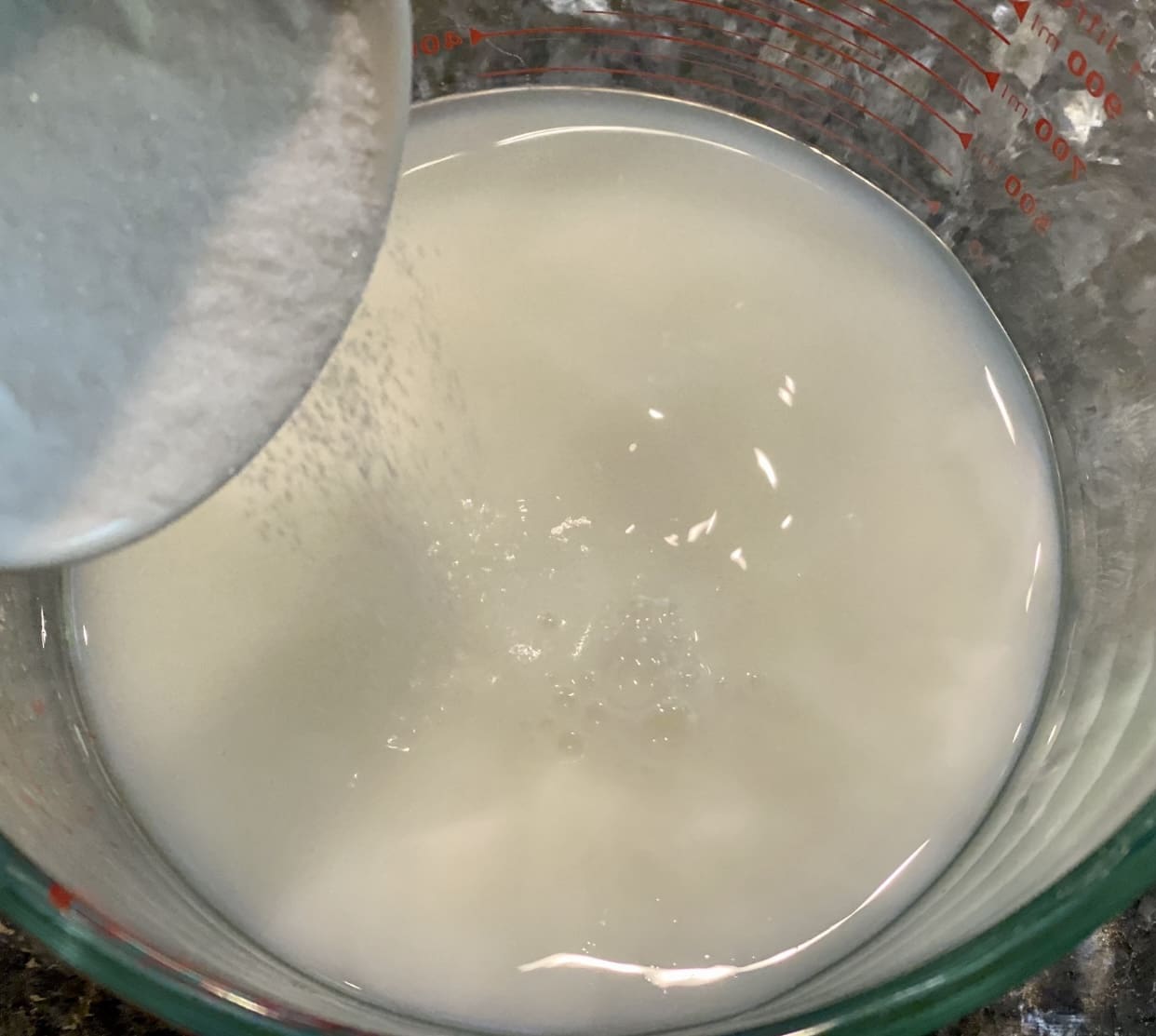
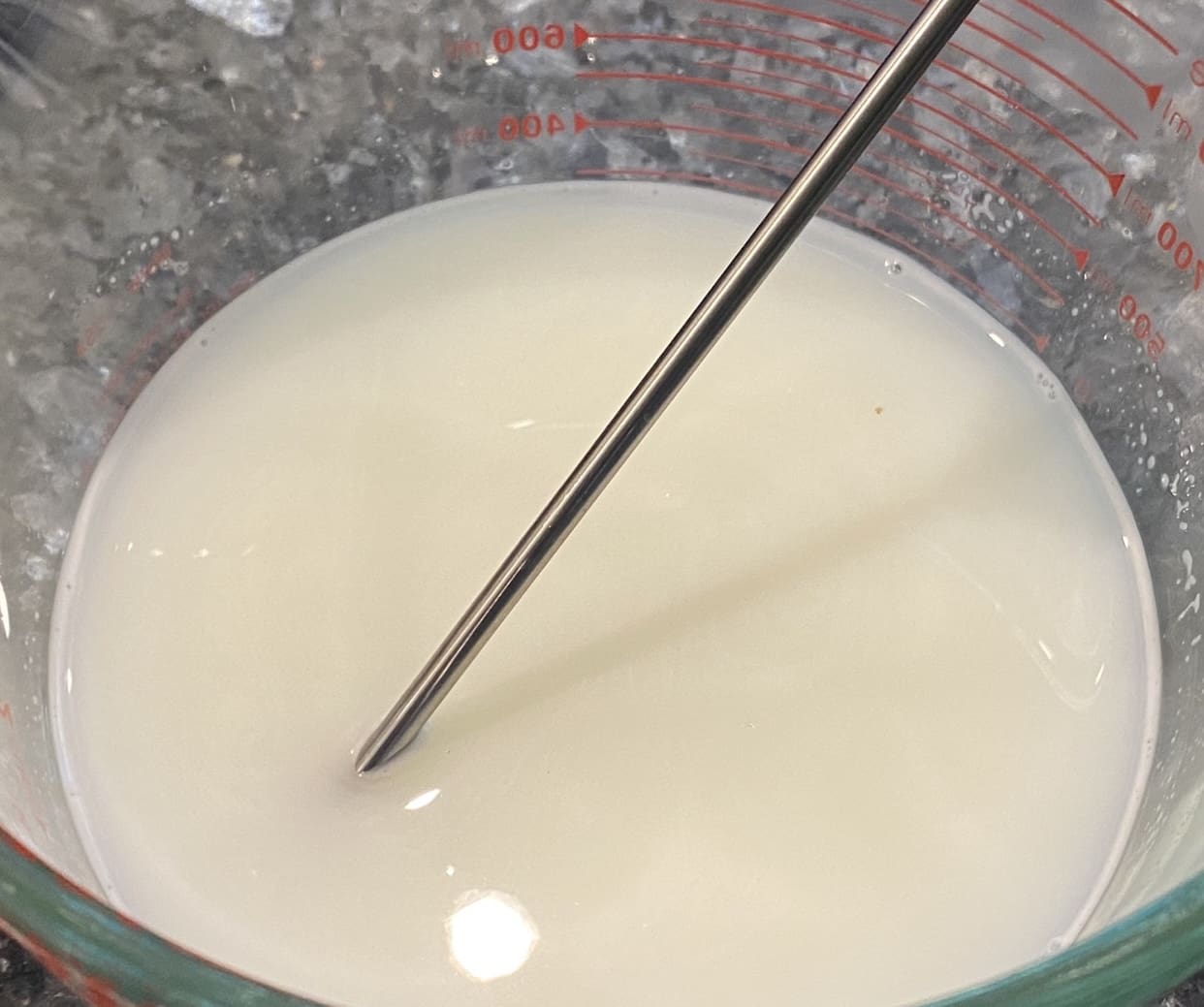
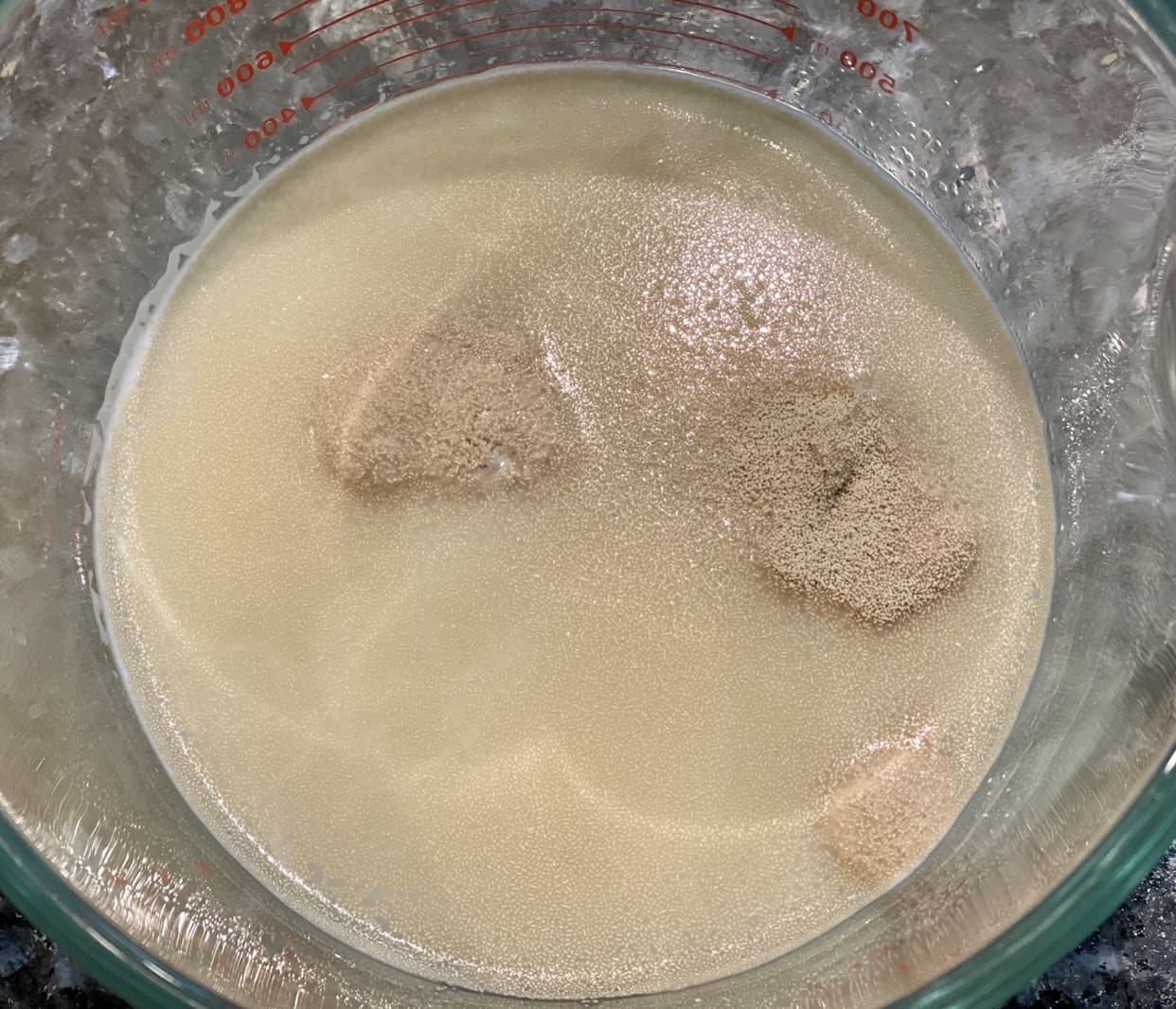
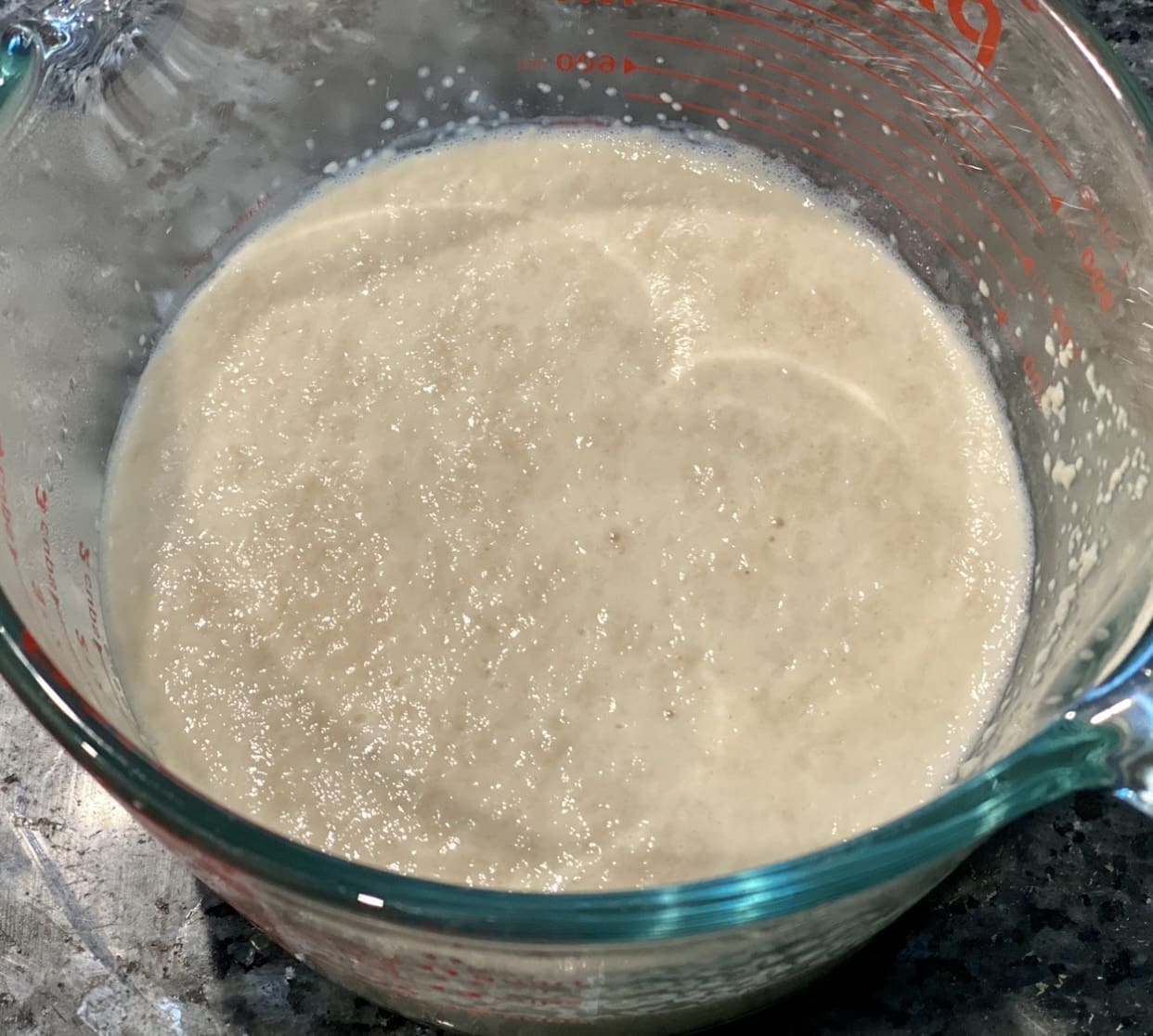
In a microwave-safe jug/bowl, pour in the water, milk and stir in a teaspoon of sugar. Place the jug into the microwave and zap it for 30 seconds. Stir the mixture and place a thermometer in. The water should be lukewarm in temperature and read between 36.5 to 40.5 C (100 to 110 F). You may need to leave the milk mixture to cool for a few minutes if it’s too hot. Once it reaches the correct temperature, stir in the yeast. Cover and leave for 7 minutes or until foamy. If it doesn’t foam, your yeast is no longer alive, so discard the mixture.
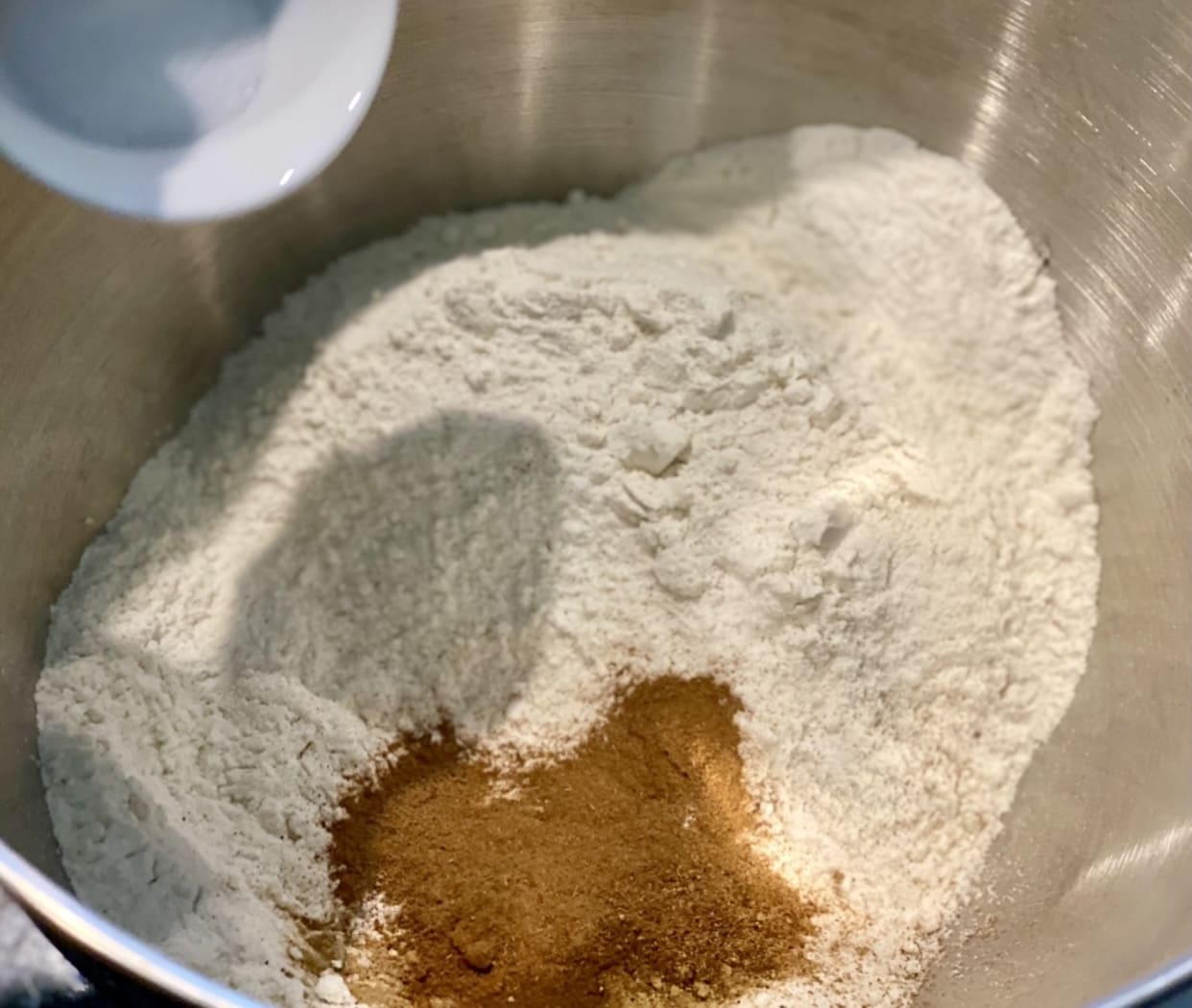
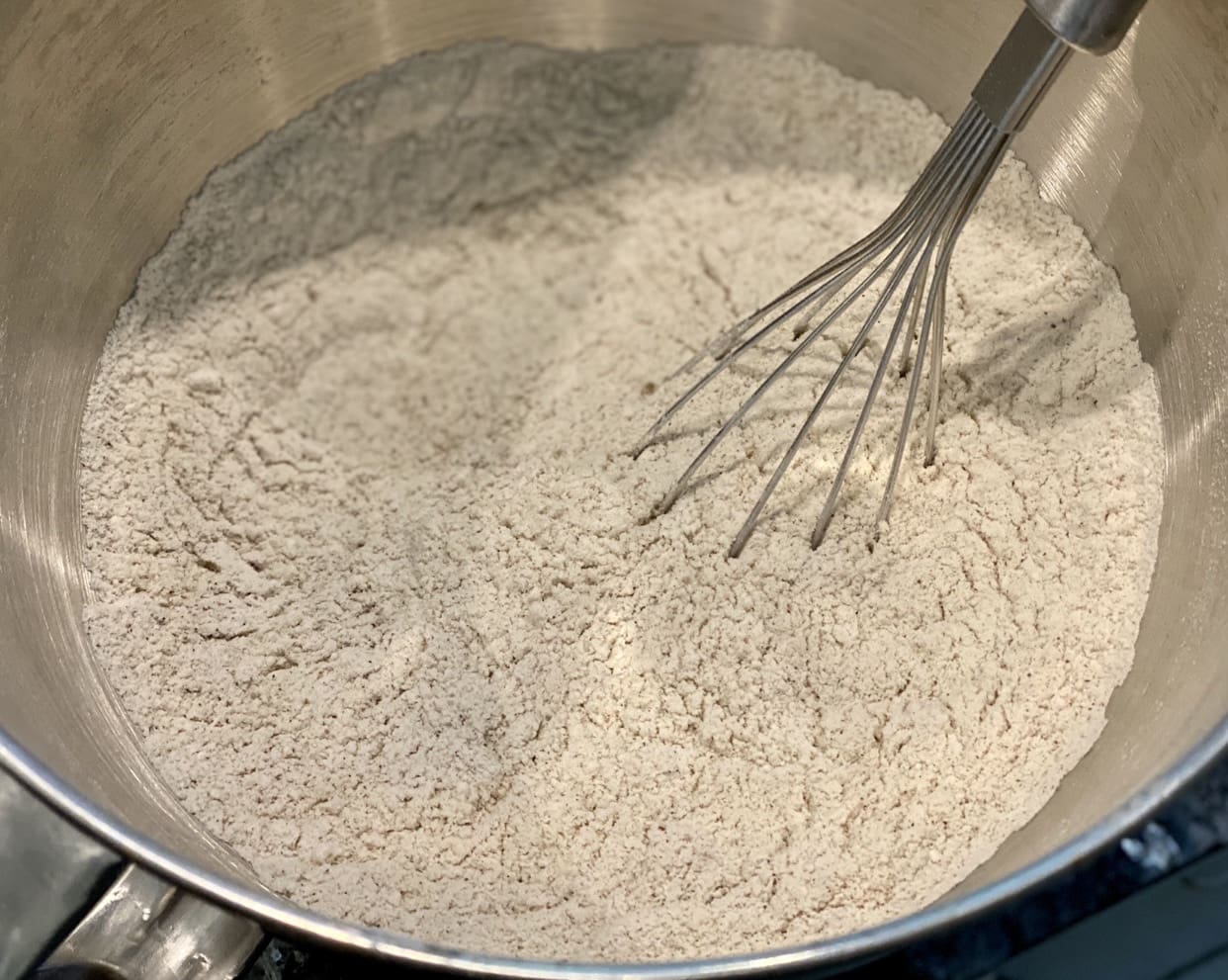
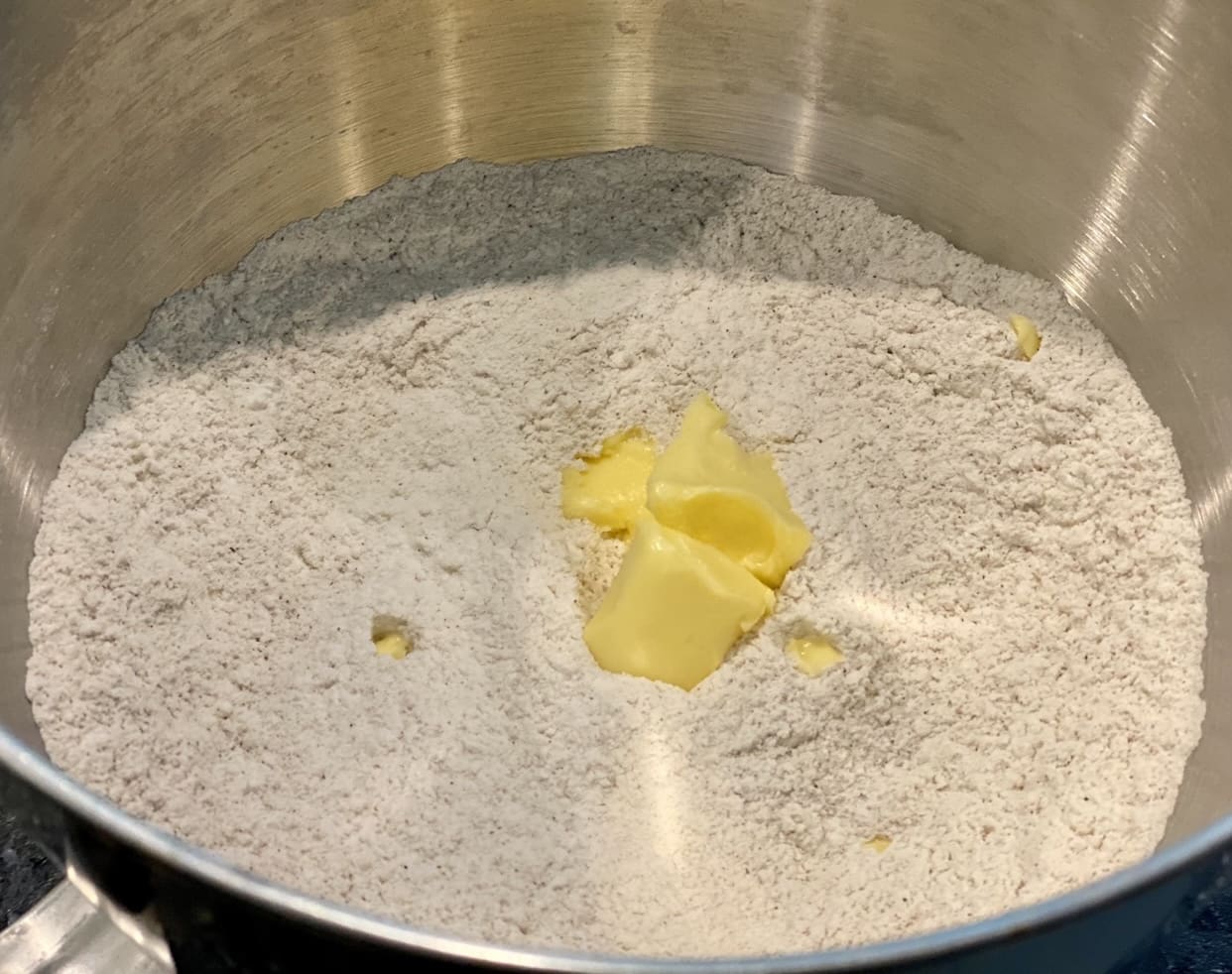
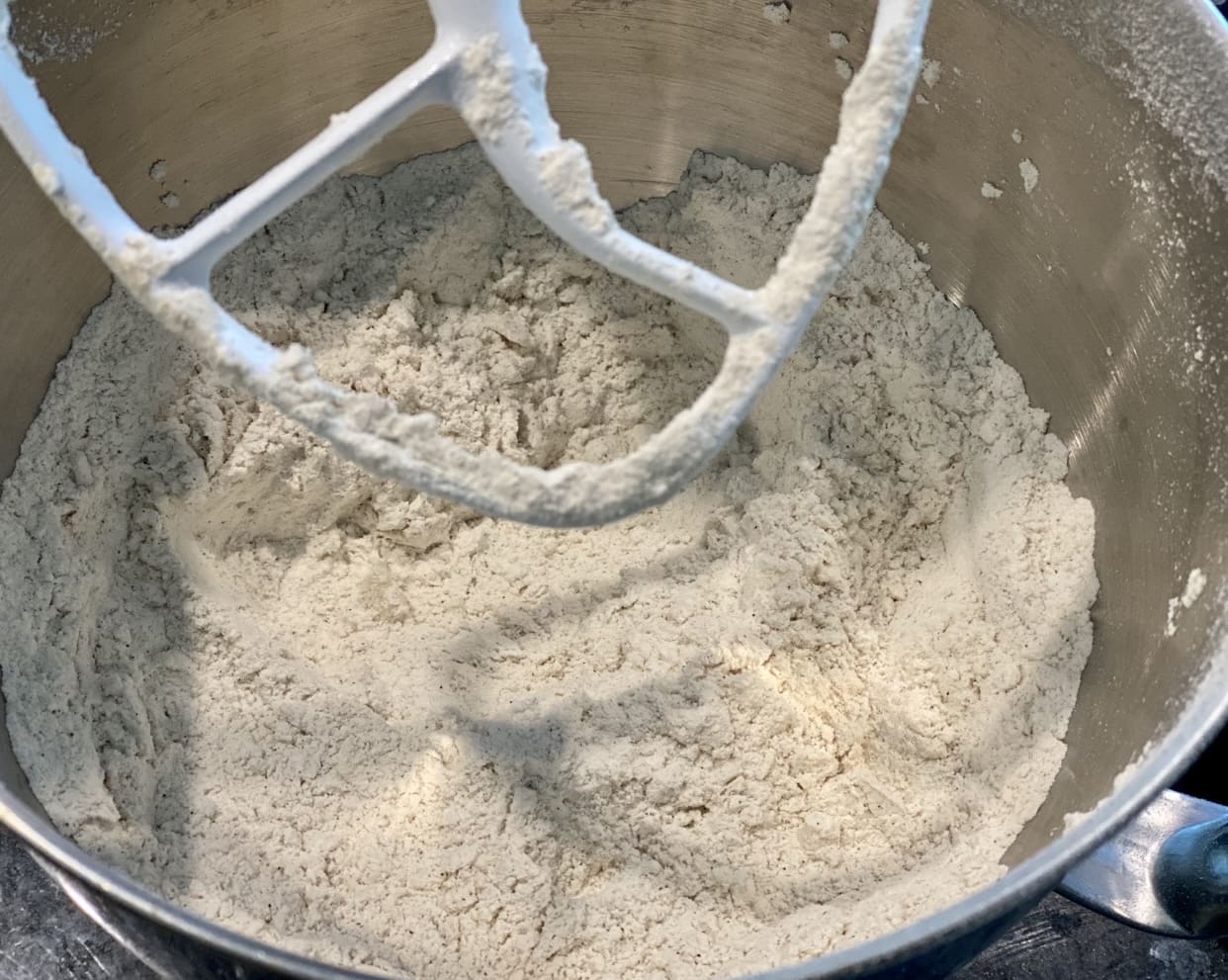
In the bowl of a stand mixer, place in the flour, sugar, cinnamon, nutmeg, ginger, cloves and salt and give it a quick whisk. Place the butter into the flour mixture and mix it at low speed using the paddle attachment until the flour resembles breadcrumbs.
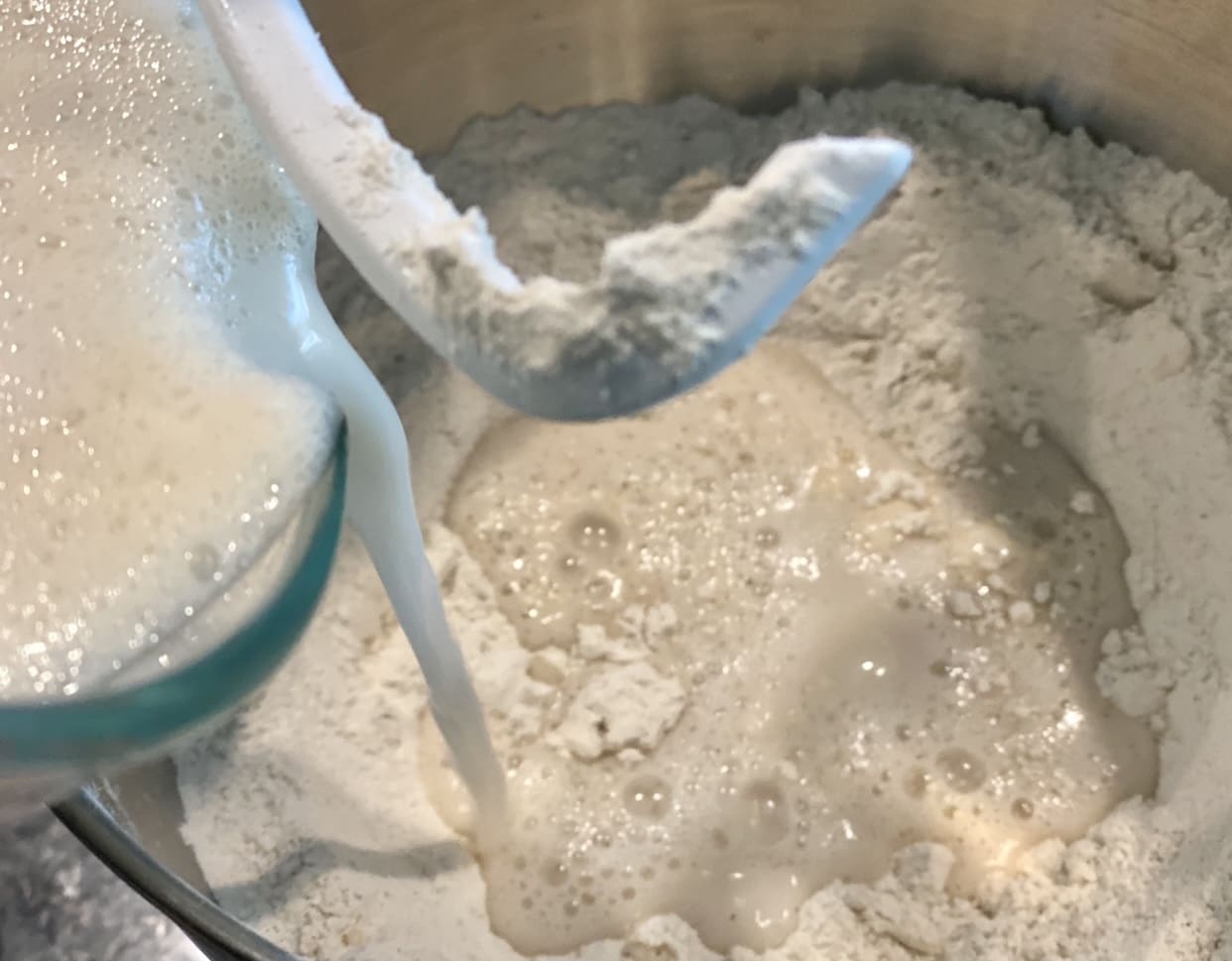
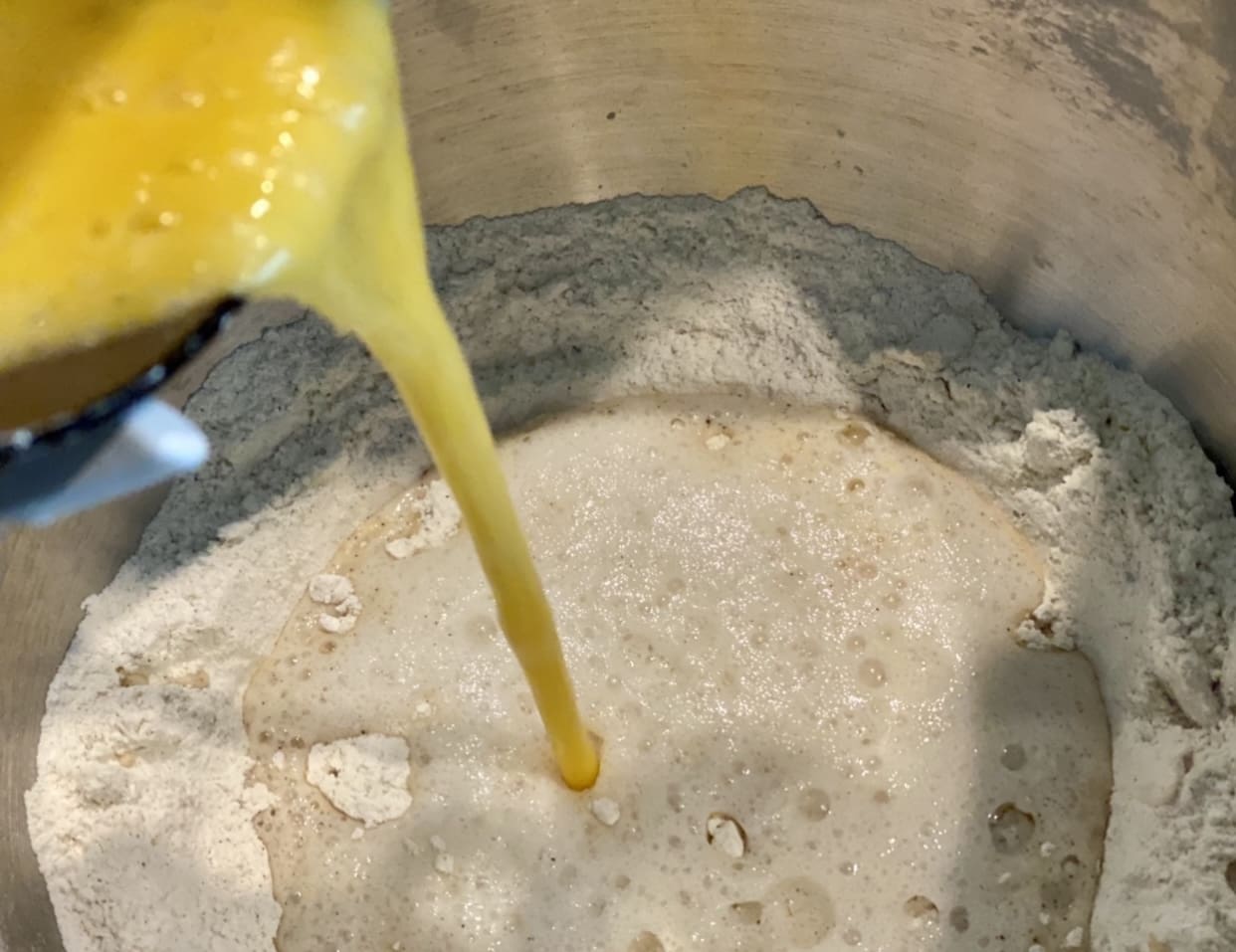
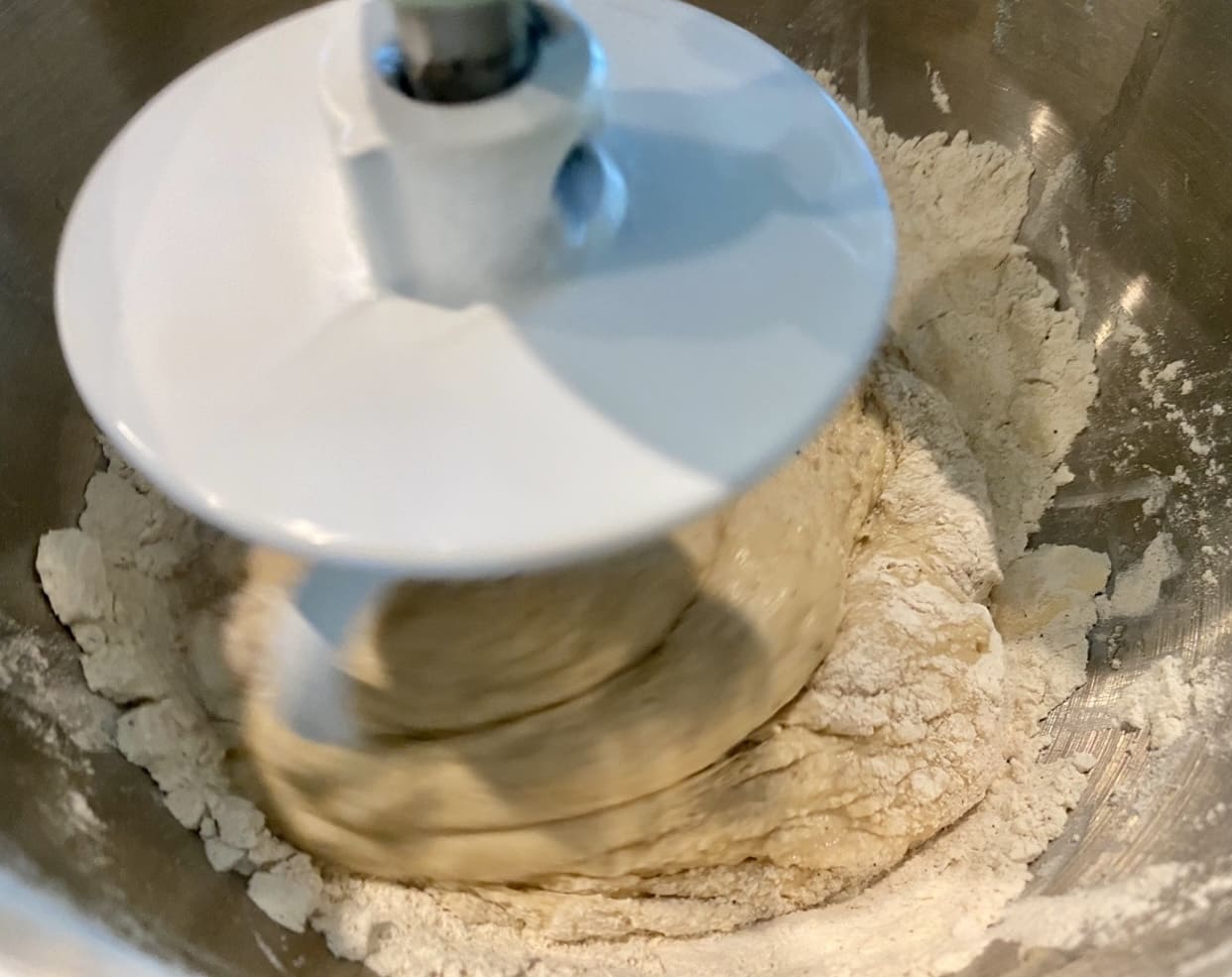
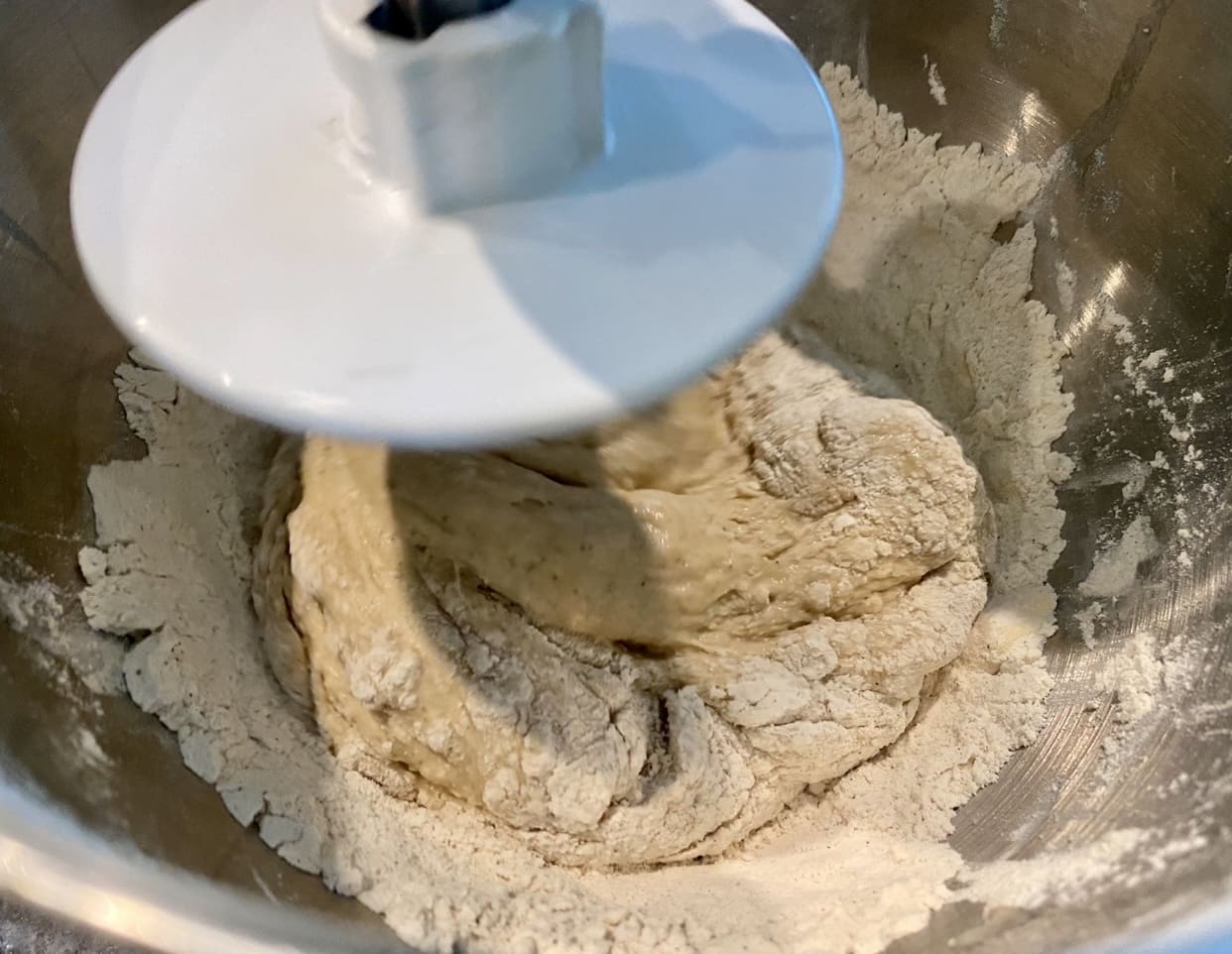


Switch the paddle attachment of the stand mixer to a dough hook. Give the foamy yeast mixture a quick stir, then pour it over the flour mixture along with the egg. Run the mixer on medium-low until it forms a dough and it leaves the sides of the bowl. Scrape the sides and base of the bowl with a spatula occasionally.

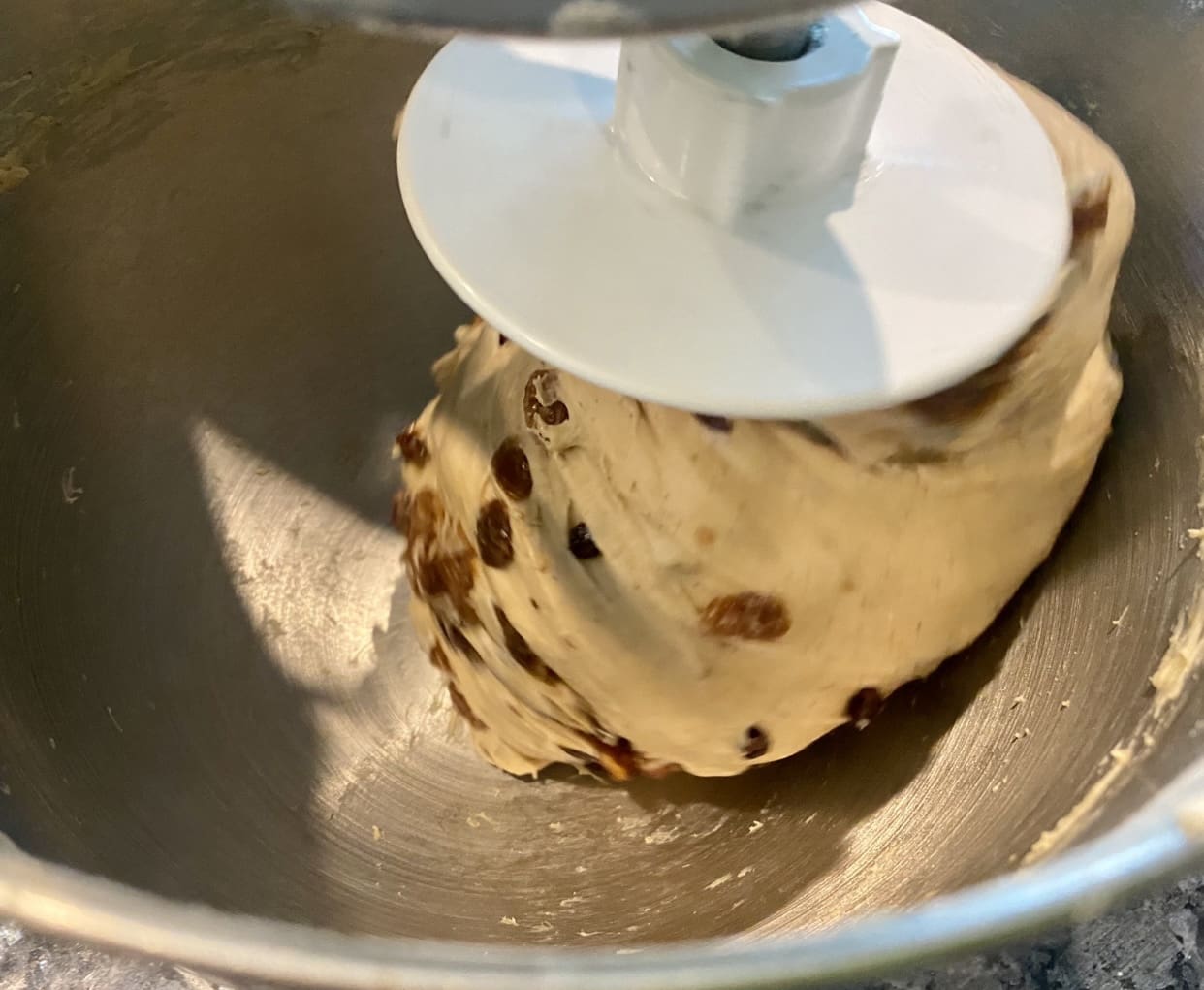
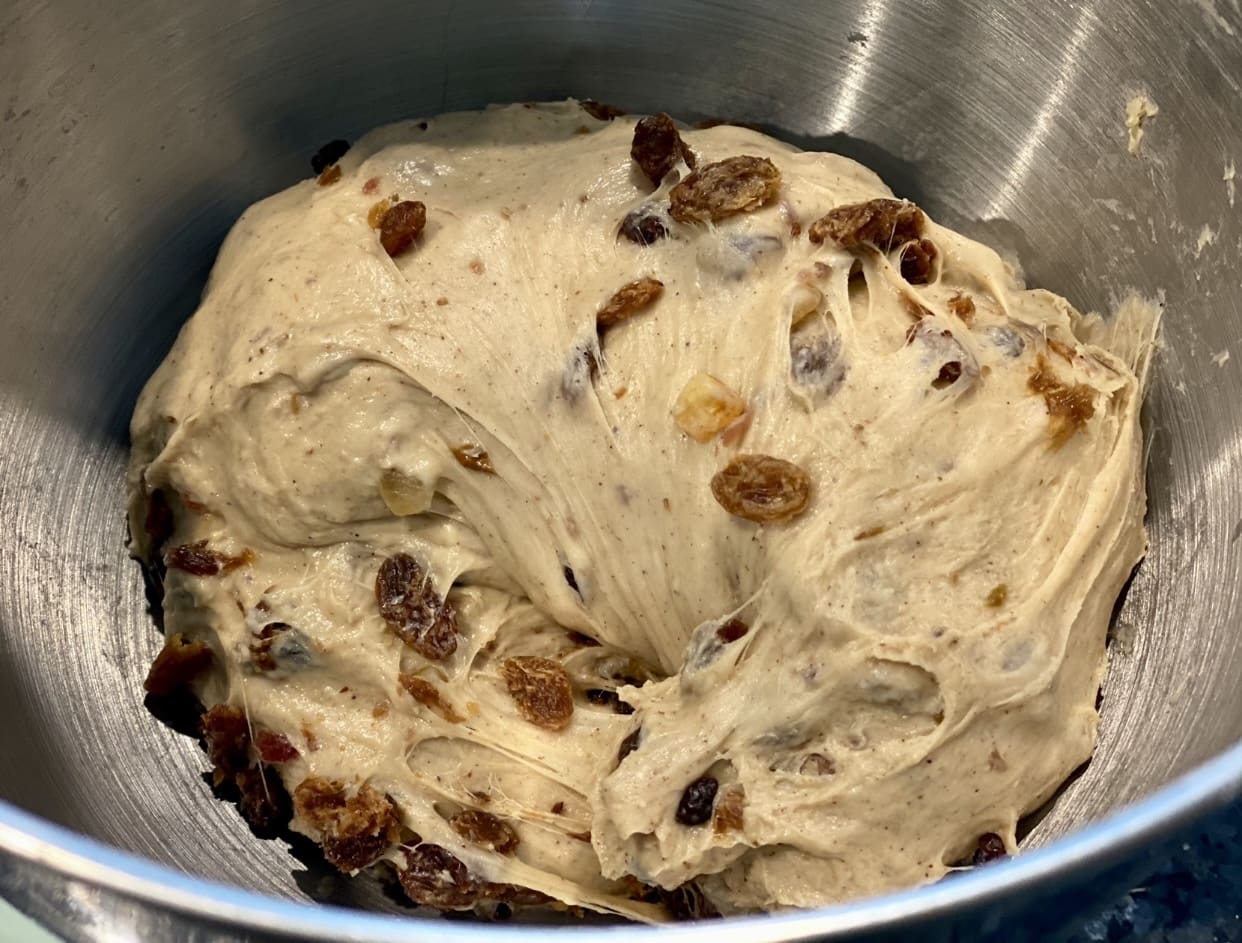
Add in the dried mixed fruit to the batter. Continue to knead the dough at a medium-low speed for 10 minutes.
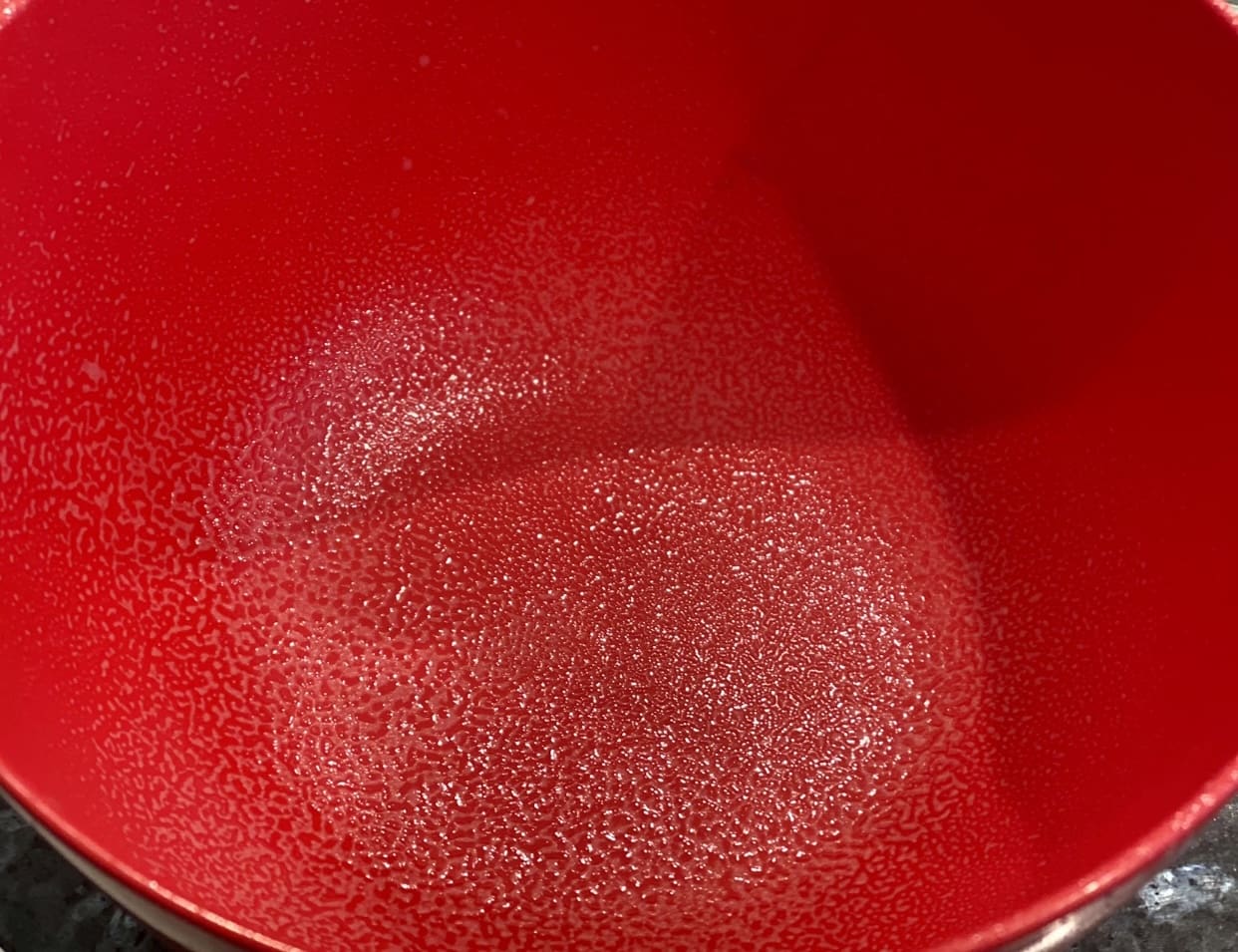

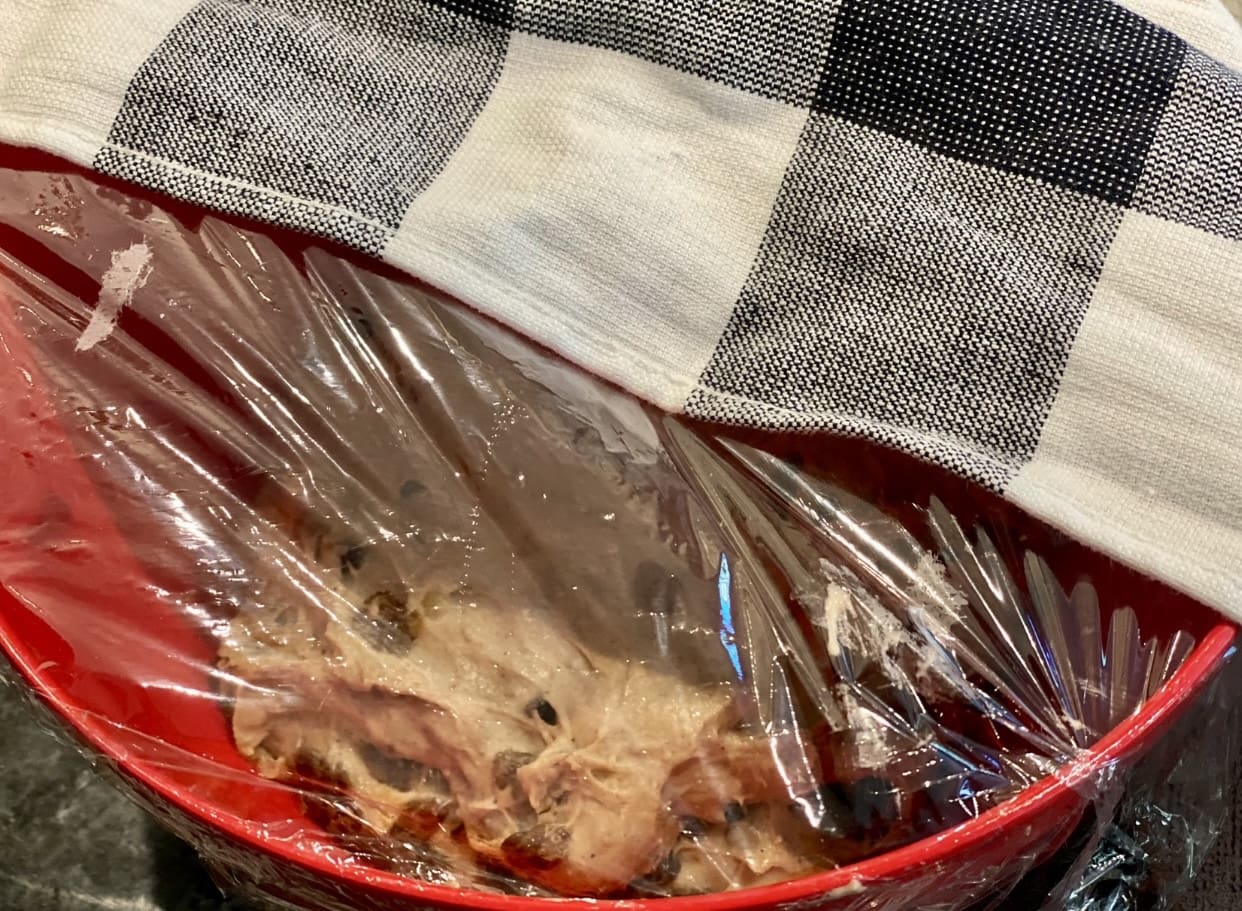
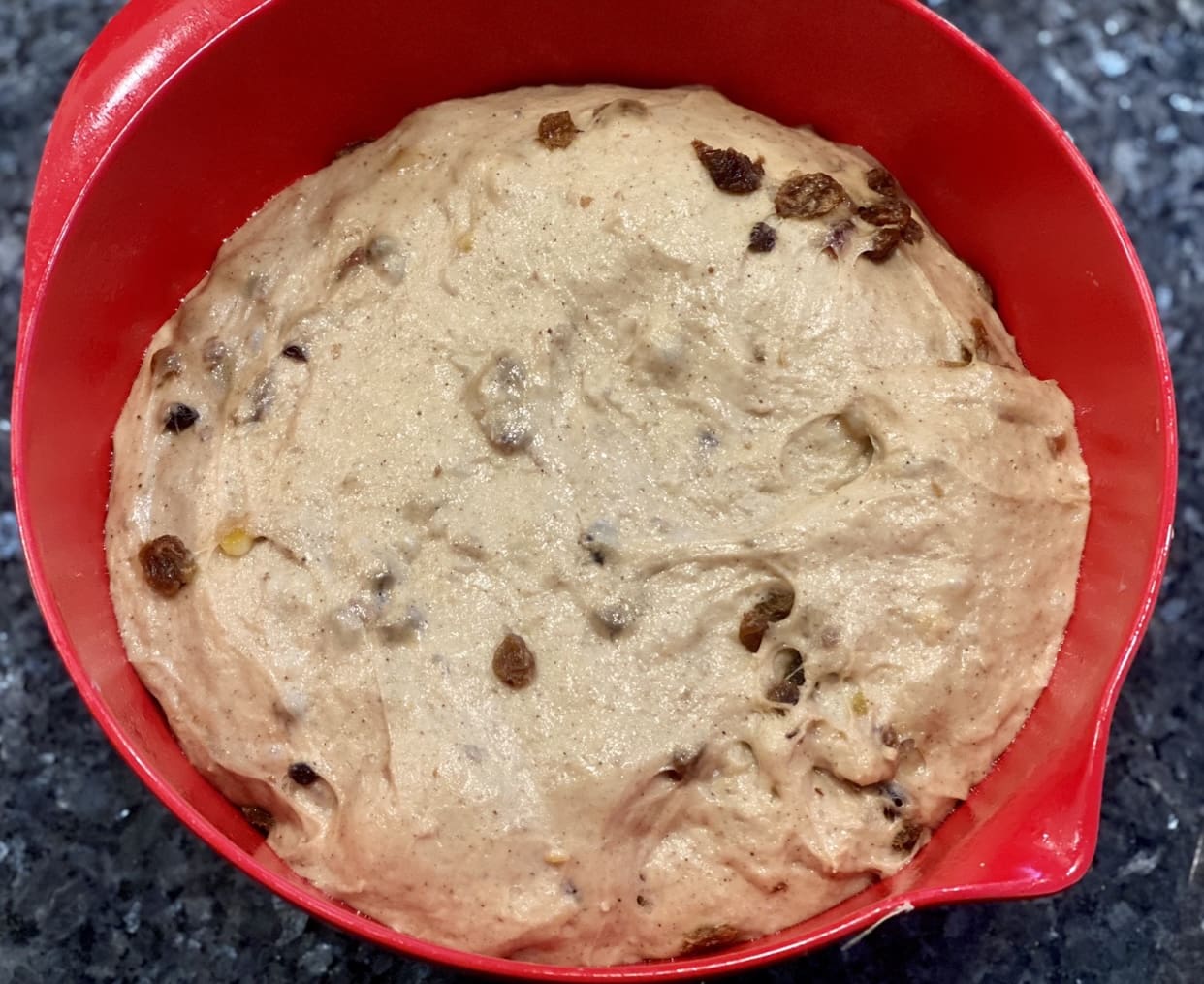
Spray/brush a large bowl lightly with oil and place the dough in, then spray more oil over the top surface of the dough to prevent it from drying out. Cover the bowl with cling wrap/plastic film and cloth for 2 to 3 hours or until dough has doubled in size. The warmer the kitchen is, the faster the dough will rise.


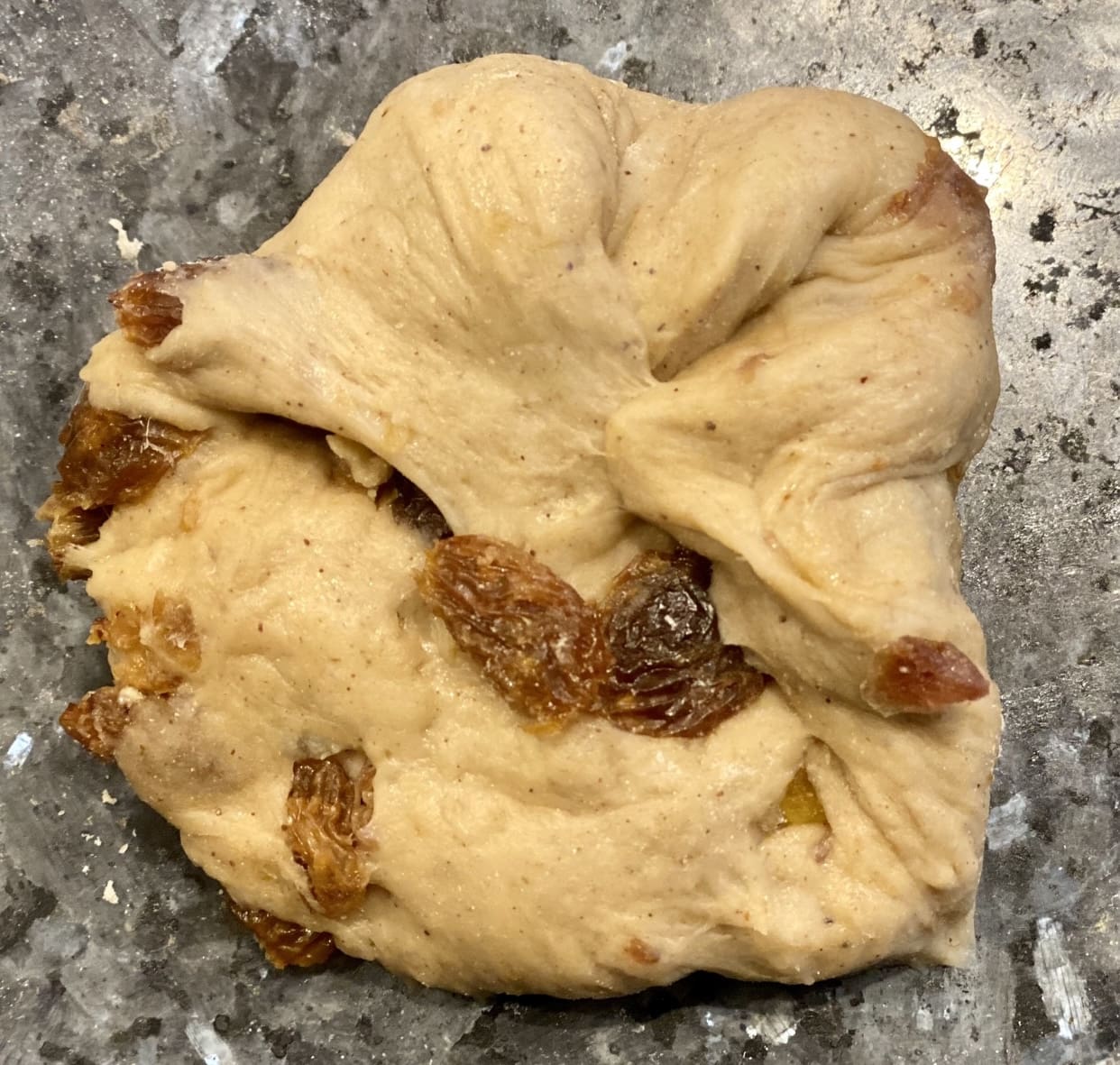
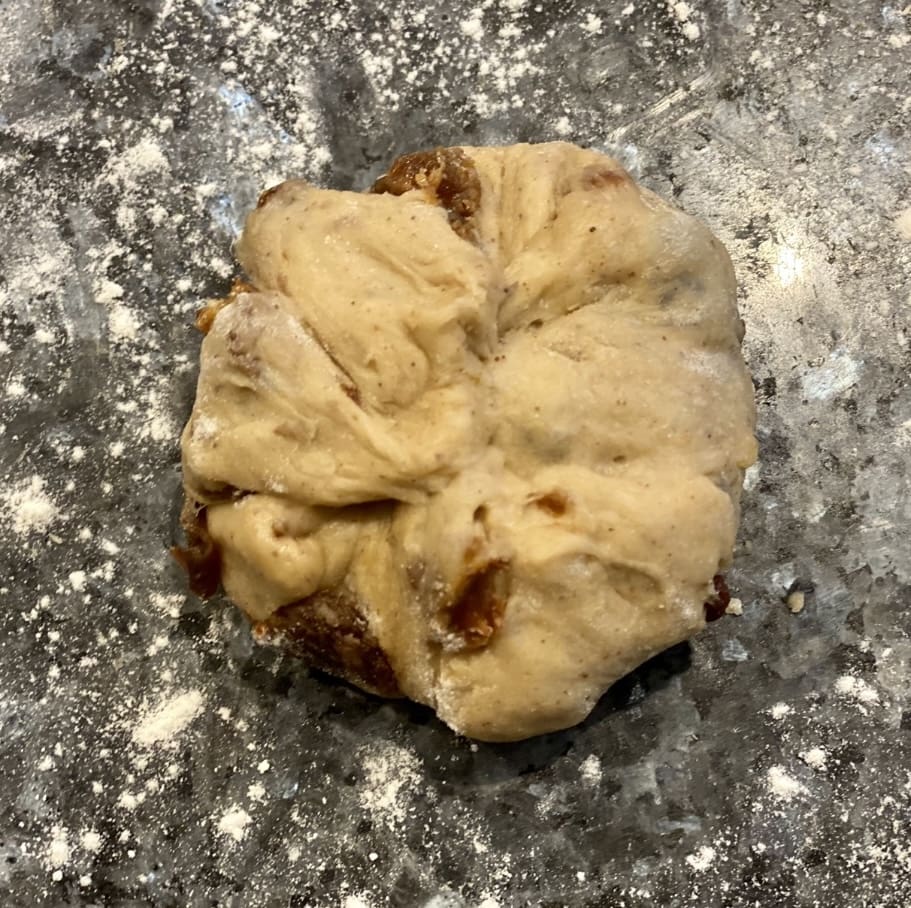
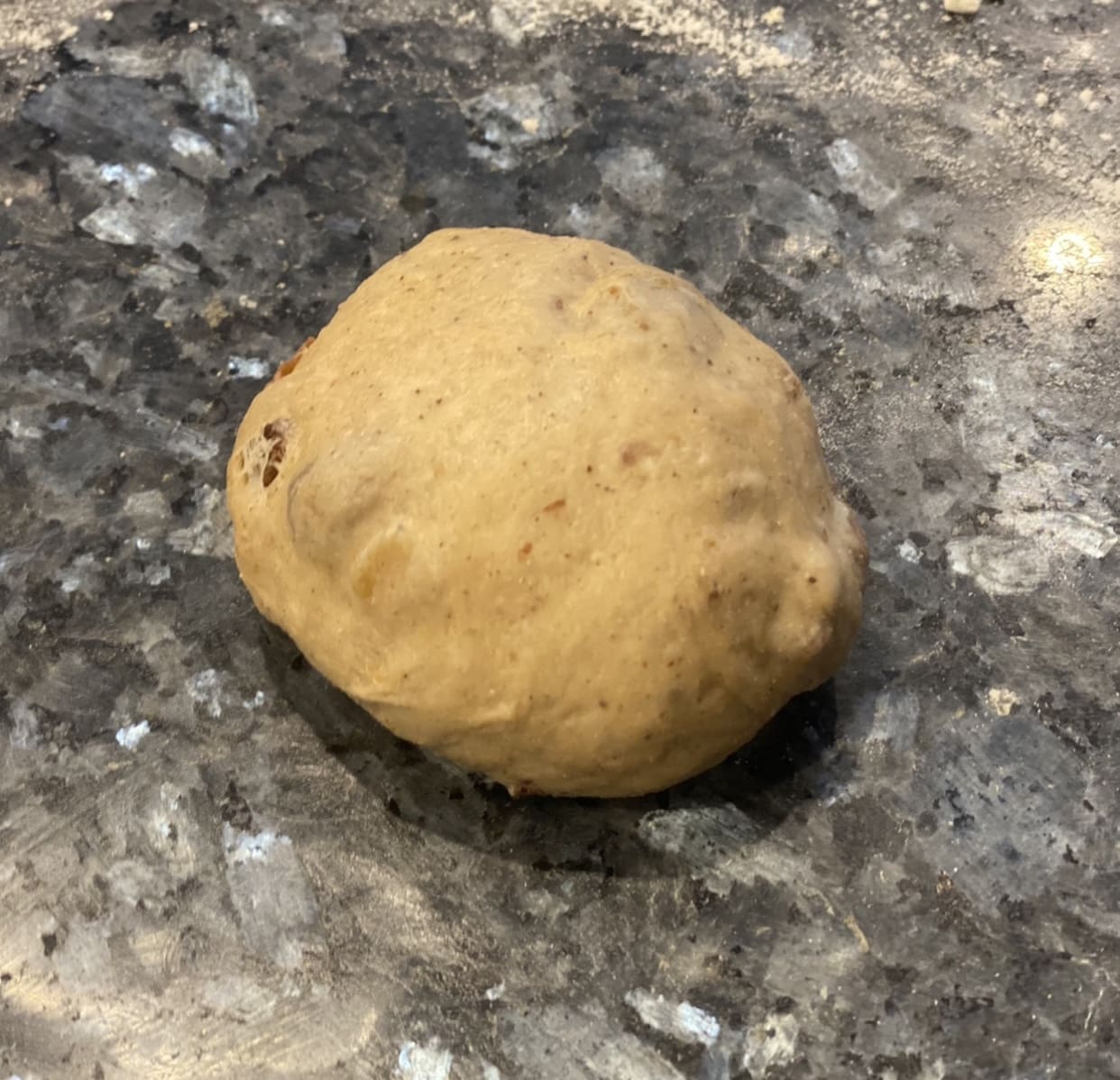
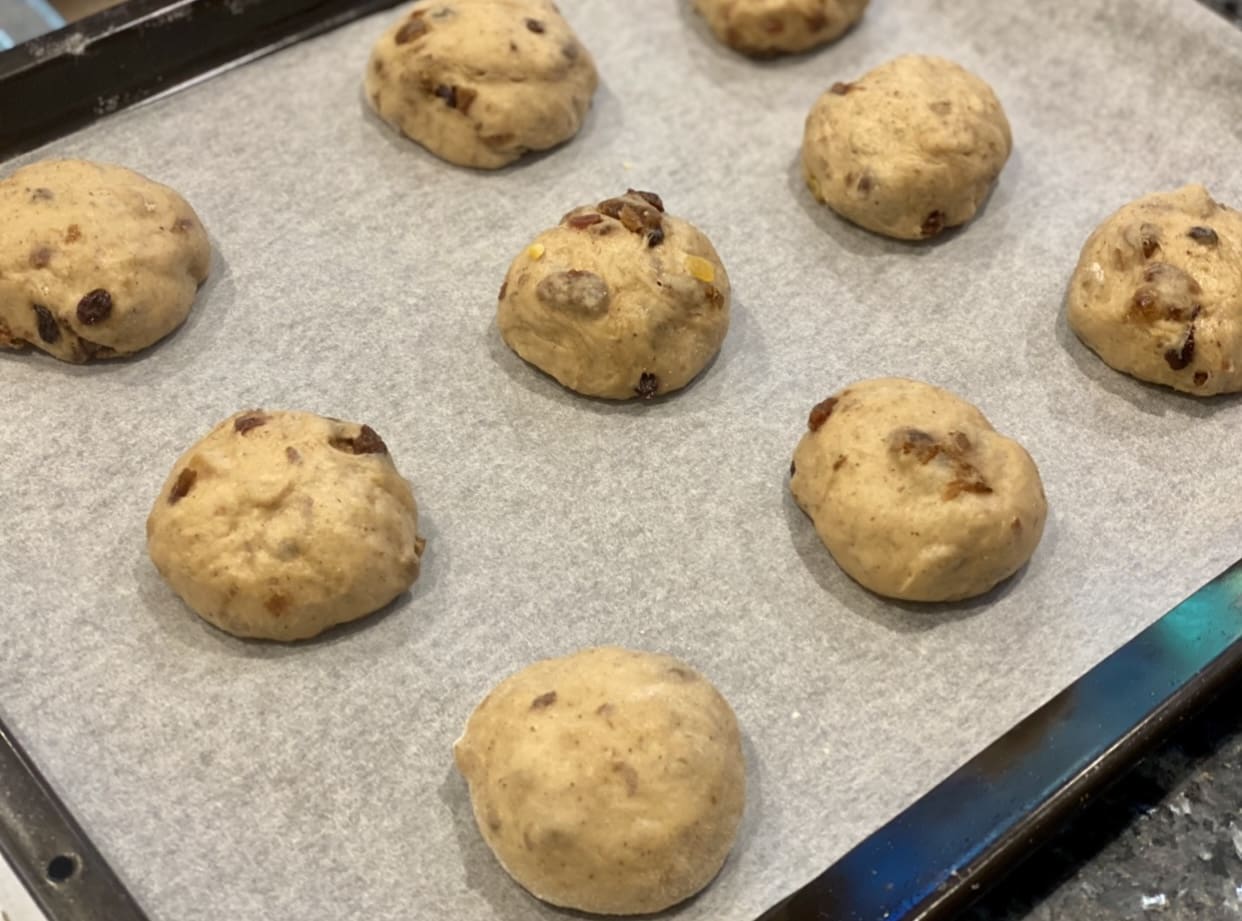
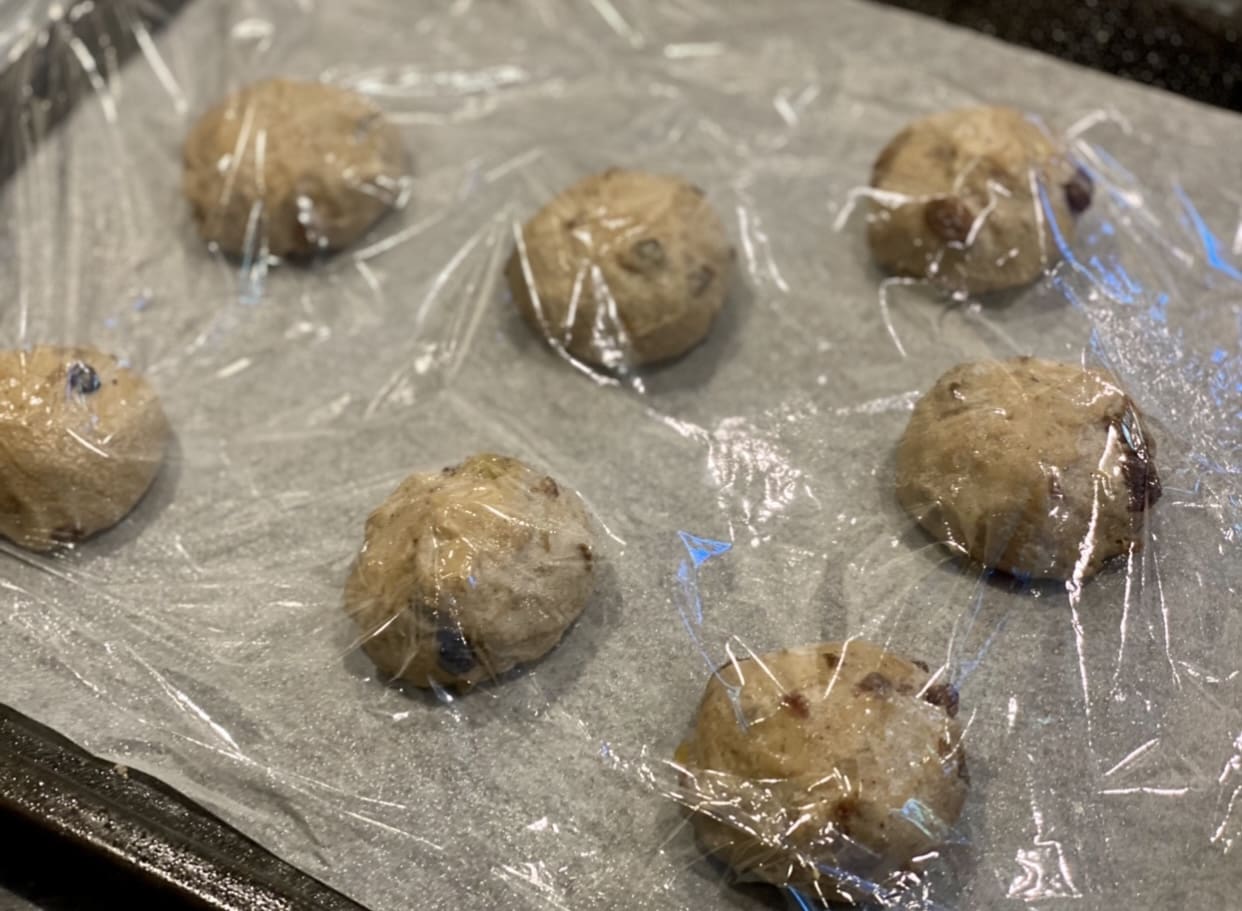
Line 2 large baking tray with non-stick baking/parchment paper. Weigh the dough and divide it by 16. Mine was approximately 70gm (2.5oz) for each bun. Lightly flour clean work bench, then shape the dough into a long log. Cut the dough roughly into 16 sections and weigh one so they’ll be roughly the same size.
Flatten a piece of dough, then lift the edges and press it towards the centre. You will get a rough-looking ball. Turn the dough over and cup it with your hand and roll the dough against the kitchen bench until you get a smooth ball. Repeat process with the remaining dough. You may need dust more flour if the dough becomes tacky.
Place the dough balls on the baking tray and space them out. Lightly spray the top surface of the dough with oil and loosely cover them with cling wrap. Let the dough rest for an hour.
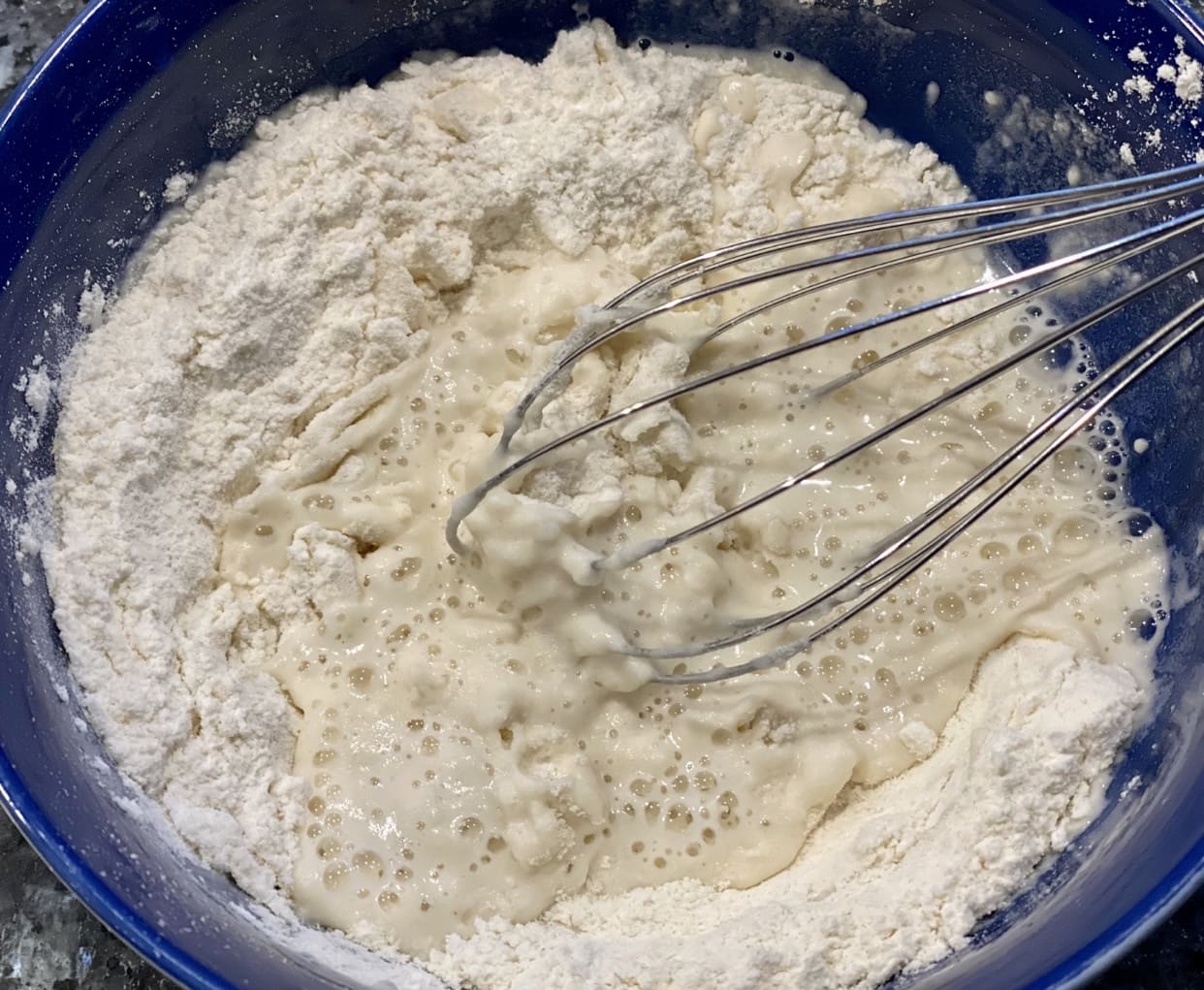


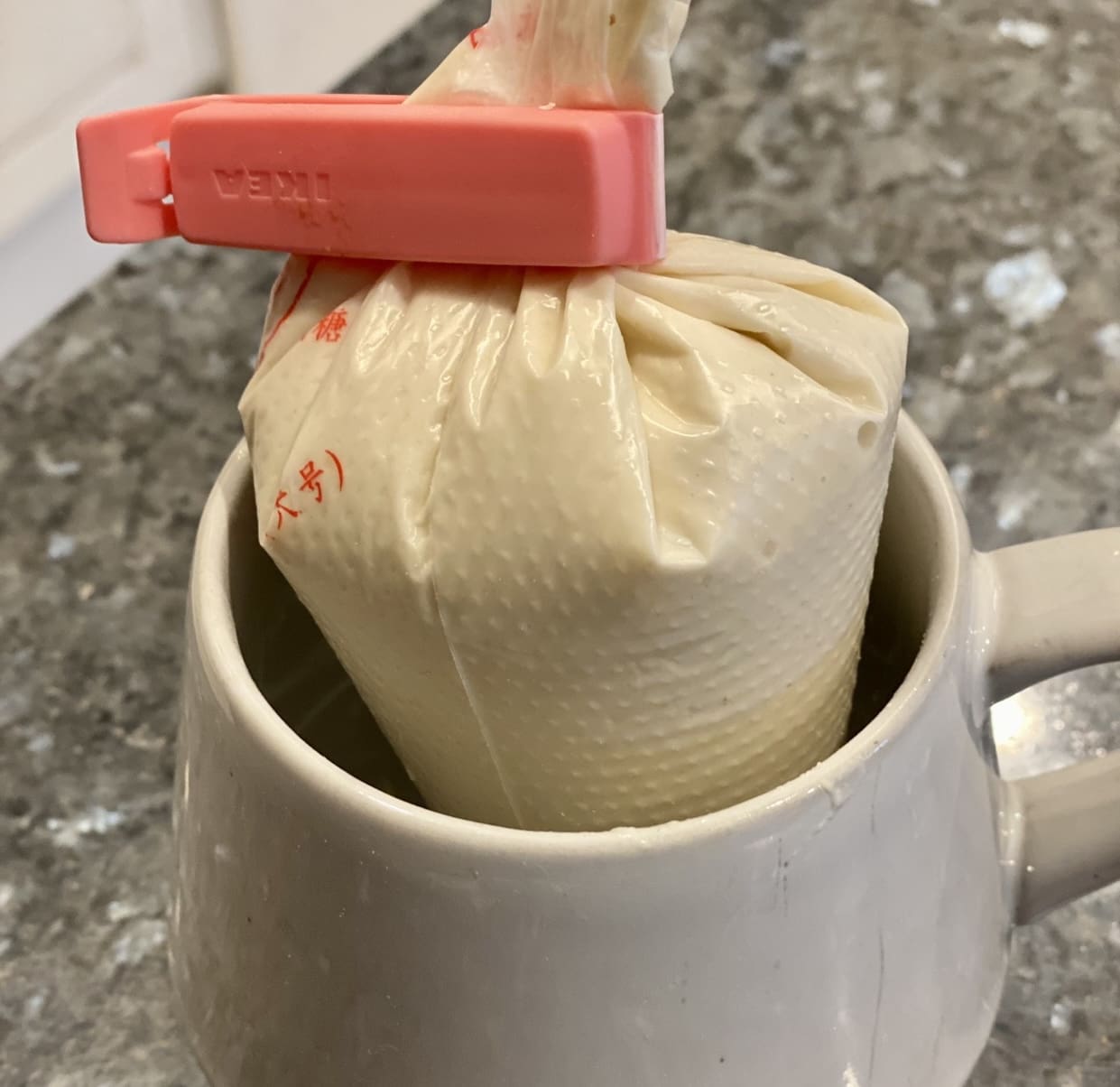
In the last 15 minutes of the dough rising time, preheat oven to 200°C (390°F) or 180°C (360°F) for fan-forced ovens.
For the cross – In a bowl, mix the flour and 4 tbsps of water together, then drizzle in the last tablespoon of water in whilst mixing. You may not need to use all the water, depending on the consistency. The paste should be runny enough to pipe but hold its shape. Place the paste into a piping bag or snap lock bag. Cut off the tip of the piping bag or snip the corner of the snap lock bag to create a piping nozzle.
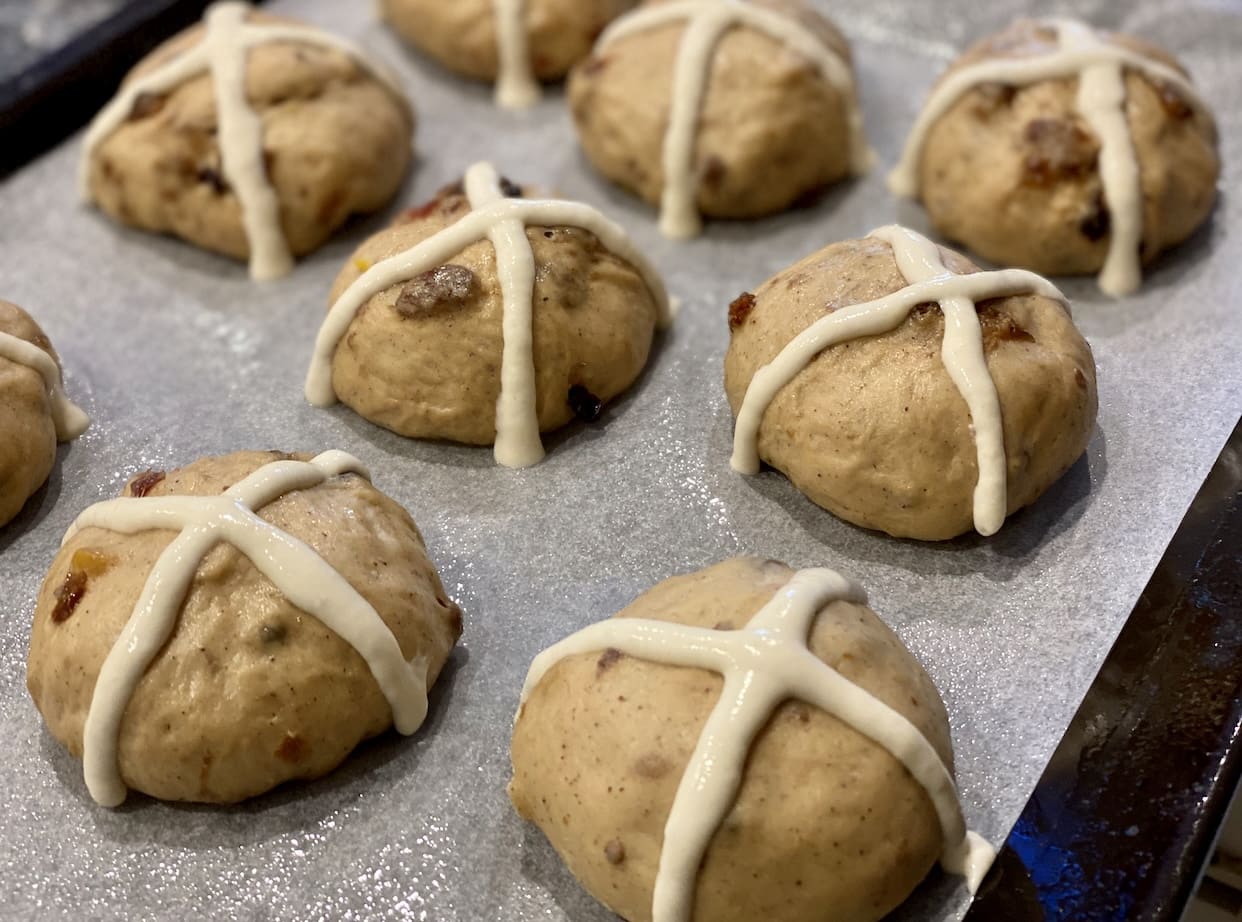
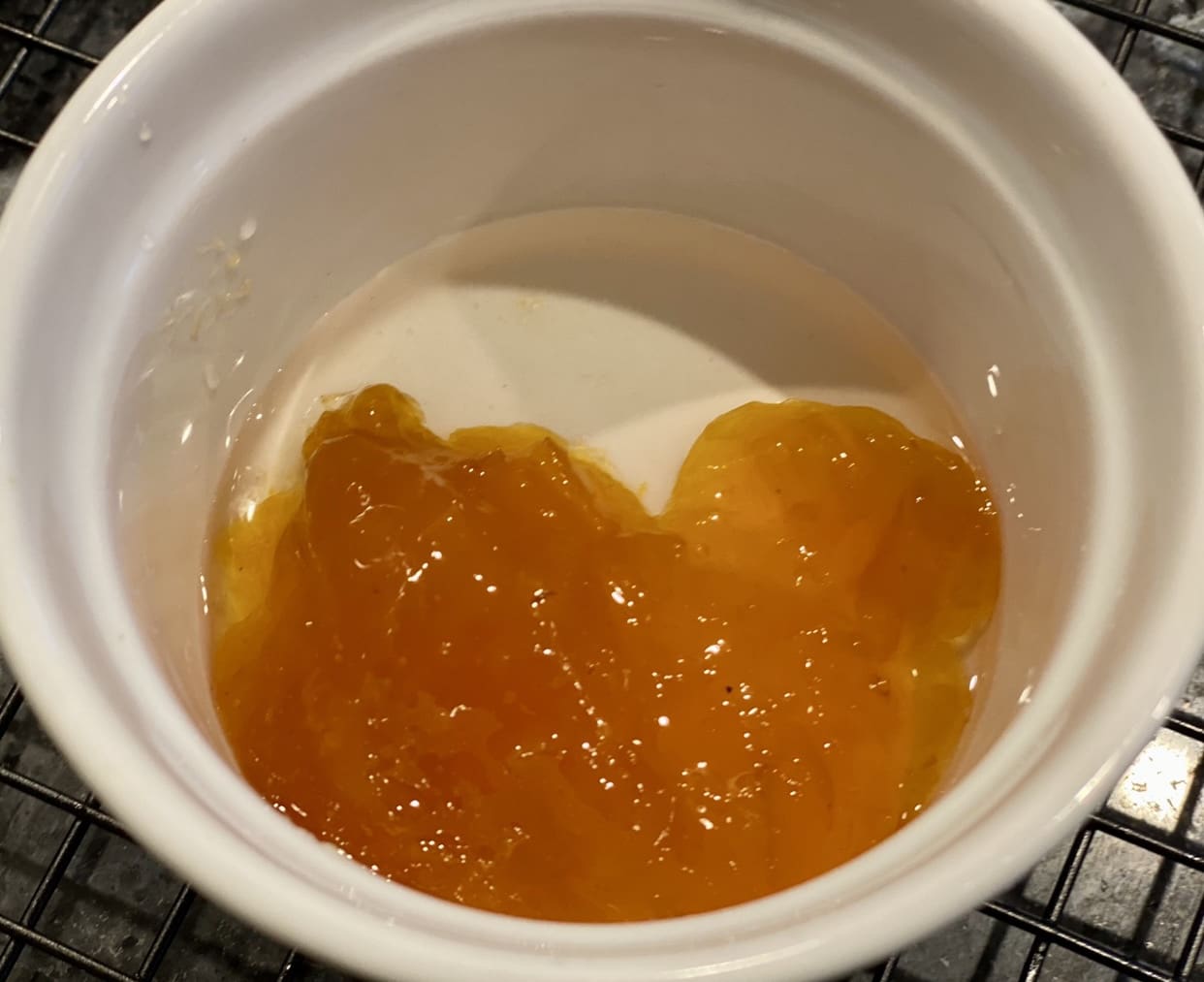

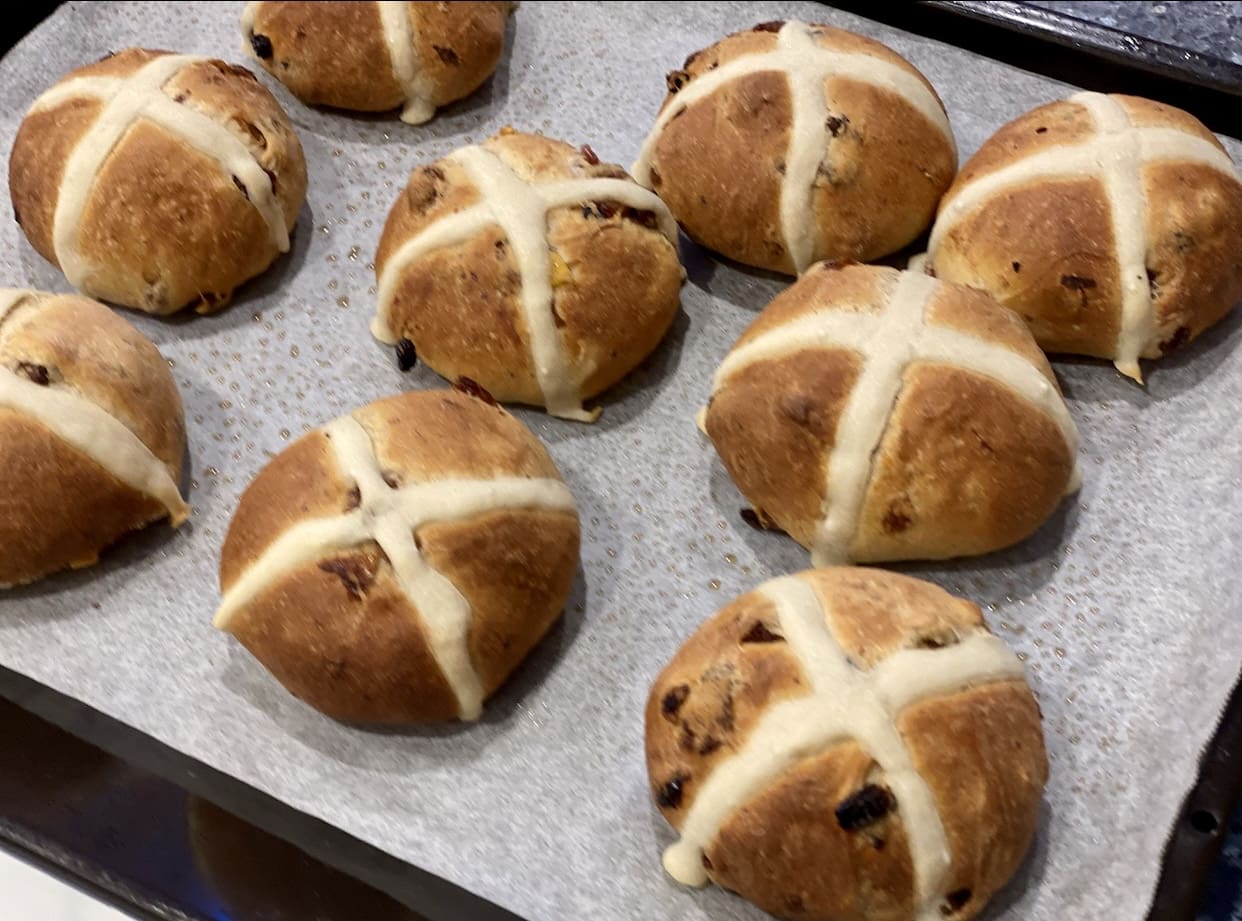

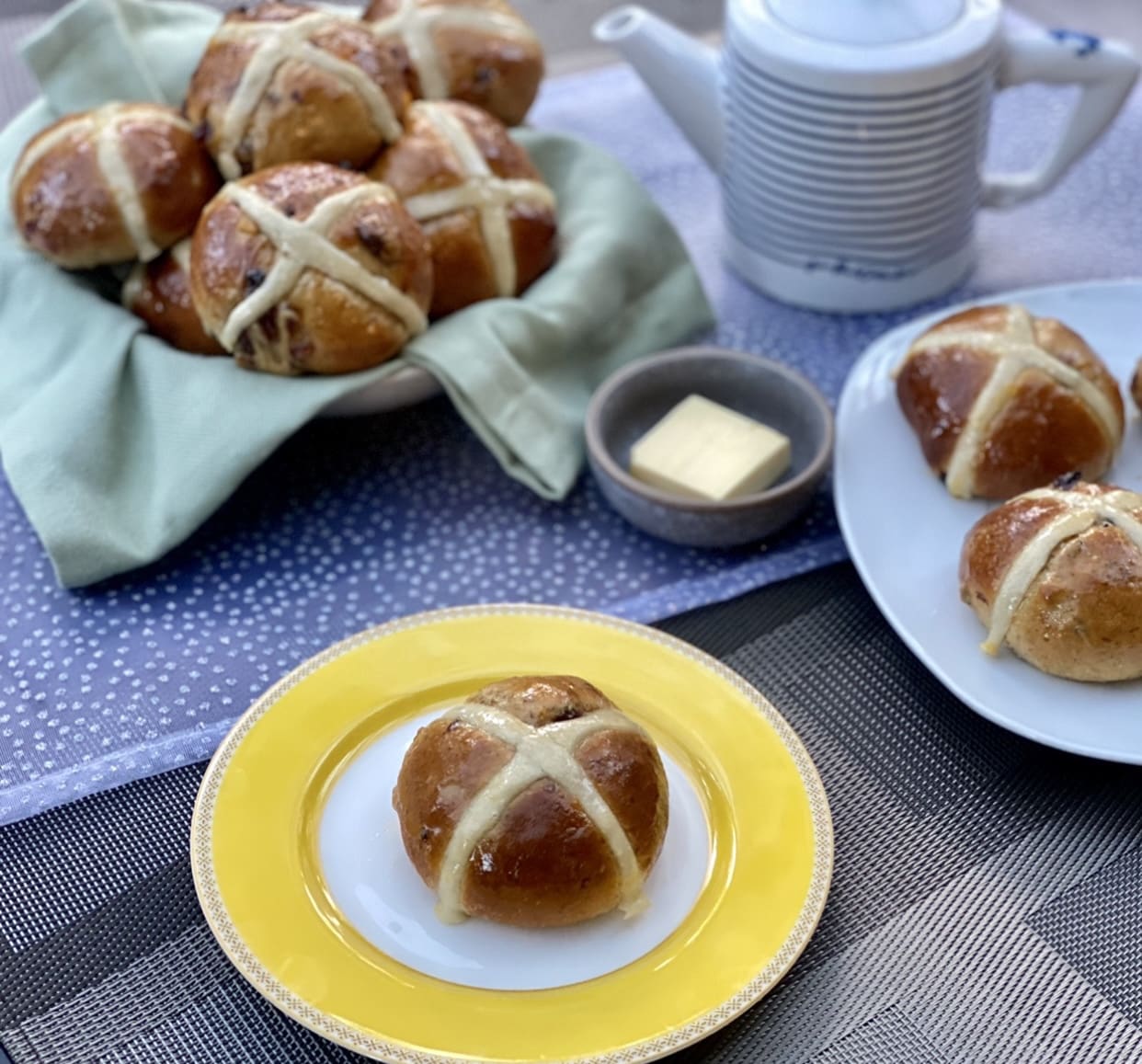
Pipe the crosses on each bun, then bake in the oven for 12 to 15 minutes until the tops have browned. Whilst baking, make the glaze by placing jam and water in a small microwave-safe bowl and zap for 20 seconds, then mix to combine.
Remove the hot cross buns from the tray and place them on a cooling rack. Brush each bun with the glaze whilst the buns are still hot. Leave the buns to cool completely before serving or they will taste doughy. They taste the best when served on the day.
Leftover – Allow the buns to cool completely at room temperature. Transfer the buns into an airtight container and leave at room temperature. It’ll be good for up to 3 days. Frozen buns will keep for up to 3 months.
A Third-Party Application calculated the calories and nutritional information. Please use this as an approximate guide only.
Cooking measurements are in Australian standard spoon and cup measurements.
I would love to hear your thoughts or feedback on this post. If you have made this recipe, please show your support by commenting and rating this recipe. You can do this by scrolling down or by clicking the green circle on the left. To prevent spam on this site, an email address is required but it won’t be published.
Cheers (I’ll drink to that) – Cat Tre

Hot Cross Buns
Ingredients
- 1 cup water
- ¼ cup milk
- ¼ cup caster sugar (NOTE 1)
- 2 tsp instant dried yeast (NOTE 2)
- 3¼ cups bread flour (more to dust) (NOTE 3)
- 1½ tsp ground cinnamon
- ¾ tsp ground nutmeg
- ½ tsp ground ginger
- ½ tsp ground cloves
- 1 tsp salt
- 40 gm butter (softened)
- 1 large egg (lightly beaten)
- 1½ cup mixed dried fruits (NOTE 4)
For the cross
- ½ cup bread flour (or plain flour)
- 4-5 tbsp water
For the glaze
- 1½ tbsp apricot jam
- 2 tsp water
Instructions
- In a microwave-safe jug/bowl, pour in the water, milk and stir in a teaspoon of sugar. Place the jug into the microwave and zap it for 30 seconds. Stir the mixture and place a thermometer in. The water should be lukewarm in temperature and read between 36.5 to 40.5 C (100 to 110 F). You may need to leave the milk mixture to cool for a few minutes if it's too hot. Once it reaches the correct temperature, stir in the yeast. Cover and leave for 7 minutes or until foamy. If it doesn't foam, your yeast is no longer alive, so discard the mixture.

- In the bowl of a stand mixer, place in the flour, sugar, cinnamon, nutmeg, ginger, cloves and salt and give it a quick whisk. Place the butter into the flour mixture and mix it at low speed using the paddle attachment until the flour resembles breadcrumbs.

- Switch the paddle attachment of the stand mixer to a dough hook. Give the foamy yeast mixture a quick stir, then pour it over the flour mixture along with the egg. Run the mixer on medium-low until it forms a dough and it leaves the sides of the bowl. Scrape the sides and base of the bowl with a spatula occasionally.

- Add in the dried mixed fruit to the batter. Continue to knead the dough at a medium-low speed for 10 minutes.

- Spray/brush a large bowl lightly with oil and place the dough in, then spray more oil over the top surface of the dough to prevent it from drying out. Cover the bowl with cling wrap/plastic film and cloth for 2 to 3 hours or until dough has doubled in size. The warmer the kitchen is, the faster the dough will rise.

- Line 2 large baking tray with non-stick baking/parchment paper. Weigh the dough and divide it by 16. Mine was approximately 70gm (2.5oz) for each bun. Lightly flour clean work bench, then shape the dough into a long log. Cut the dough roughly into 16 sections and weigh one so they'll be roughly the same size.

- Flatten a piece of dough, then lift the edges and press it towards the centre. You will get a rough-looking ball. Turn the dough over and cup it with your hand and roll the dough against the kitchen bench until you get a smooth ball. Repeat process with the remaining dough. You may need dust more flour if the dough becomes tacky.

- Place the dough balls on the baking tray and space them out. Lightly spray the top surface of the dough with oil and loosely cover them with cling wrap. Let the dough rest for an hour.

- In the last 15 minutes of the dough rising time, preheat oven to 200°C (390°F) or 180°C (360°F) for fan-forced ovens. For the cross – In a bowl, mix the flour and 4 tbsps of water together, then drizzle in the last tablespoon of water in whilst mixing. You may not need to use all the water, depending on the consistency. The paste should be runny enough to pipe but hold its shape. Place the paste into a piping bag or snap lock bag. Cut off the tip of the piping bag or snip the corner of the snap lock bag to create a piping nozzle.

- Pipe the crosses on each bun, then bake in the oven for 12 to 15 minutes until the tops have browned. Whilst baking, make the glaze by placing jam and water in a small microwave-safe bowl and zap for 20 seconds, then mix to combine.

- Remove the hot cross buns from the tray and place them on a cooling rack. Brush each bun with the glaze whilst the buns are still hot. Leave the buns to cool completely before serving or they will taste doughy. They taste the best when served on the day.


